Xmonad
Xmonad is a tiling window manager for X. Windows are arranged automatically to tile the screen without gaps or overlap, maximizing screen use. Xmonad is written, configured and extensible in Haskell. Custom layout algorithms, key bindings and other extensions may be written by the user in configuration files. Layouts are applied dynamically, and different layouts may be used on each workspace. Xinerama is fully supported, allowing windows to be tiled on several physical screens.
The Ultimate Xmonad Configuration With Modular Configs, Extra Functionality And Themes (27 Pre-Made + Infinite Auto Generated Themes With pywal)
Get Xmonad Premium From ko-fi And Support Archcraft Development.
Installation
Once you finish installing Archcraft, Xmonad can be installed on the top of it. It's pre-configured and ready to go.
- Regular
- Premium
Open a terminal and run the following command to install the regular version of Xmonad :
$ sudo pacman -Sy archcraft-xmonad
Download the premium package from ko-fi, and save it in a directory. Open a terminal in same directory and run the following command to install Xmonad premium :
$ sudo pacman -U archcraft-xmonad-premium-X.Y-Z-any.pkg.tar.zst
Xmonad Premium is not pre-installed on Archcraft Prime ISO
Configuration
Xmonad is pre-configured in Archcraft. In this section, We'll see how the Xmonad window manager is configured, what tools and utilities are used to make it look and work like a complete desktop environment.
Config Structure
The configuration structure of Xmonad in Archcraft looks something like this:
~/.config
└── xmonad : Xmonad config directory
├── alacritty : terminal config
├── scripts : scripts used for Xmonad
├── themes : all themes (polybar, rofi configs)
├── dunstrc : dunst config for notifications
├── picom.conf : compositor config
├── xmonad.hs : main Xmonad config file
└── xsettingsd : gtk themes, icons and fonts config file
Terminal
Alacritty is the default terminal. In the Xmonad window manager, alacritty is launched with an alternative config file. If you need to change anything, make sure you modify the config files in ~/.config/xmonad/alacritty directory. These are the following config files you can modify to change the behaviour of your terminal:
~/.config/xmonad/alacritty/alacritty.toml : Main configuration file
~/.config/xmonad/alacritty/colors.toml : Colors configurations
~/.config/xmonad/alacritty/fonts.toml : Fonts configurations
If you need any help with alacritty config, run :
man 5 alacrittyin terminal.
When you change the theme, the colors.toml and fonts.toml file get overwritten by the theme script.
This is applicable only in Xmonad Premium as themes are only available in it. On regular version, there's only one theme.
Notification
Dunst is used as a notification daemon for notifications in Xmonad. In the Xmonad window manager, dunst is launched with an alternative config file, which is ~/.config/xmonad/dunstrc. So, If you need to modify anything, make sure you edit this file.
If you need any help with dunst config, run :
man 5 dunstin terminal.
When you change the theme, the fonts and colors in dunstrc file get overwritten by the theme script.
This is applicable only in Xmonad Premium as themes are only available in it. On regular version, there's only one theme.
Wallpaper
hsetroot sets the wallpaper in the Xmonad. If you want to change the wallpaper, Edit the following scripts :
- Regular
- Premium
Edit ~/.config/xmonad/scripts/xmonad_autostart script and add the path to your wallpaper.
# Restore wallpaper
hsetroot -cover '/path/to/your/wallpaper'
Edit ~/.config/xmonad/themes/wallpaper.sh script and add the path to your wallpaper.
WALLPAPER='/path/to/your/wallpaper'
When you change the theme, the script wallpaper.sh get overwritten by the theme script.
Statusbar
Polybar is used as the statusbar in Archcraft's Xmonad window manager.
- Regular
- Premium
The configurations for polybar can be found inside the theme directory directory of Xmonad ~/.config/xmonad/theme
If you want to modify the polybar settings, or perhaps want to add/remove modules, then you need to edit the following files :
~/.config/xmonad/theme/polybar/config.ini : Main config file
~/.config/xmonad/theme/polybar/colors.ini : Colors config file
~/.config/xmonad/theme/polybar/modules.ini : Modules config file
If you need any help with polybar config, visit : polybar wiki
The configurations for polybar can be found inside the currently applied theme's directory, which is inside the themes directory of Xmonad ~/.config/xmonad/themes
Let's say that the currently applied theme is default and you want to modify the polybar settings, or perhaps want to add/remove modules, then you need to edit the following files :
~/.config/xmonad/themes/default/polybar/config.ini : Main config file
~/.config/xmonad/themes/default/polybar/colors.ini : Colors config file
~/.config/xmonad/themes/default/polybar/modules.ini : Modules config file
If you need any help with polybar config, visit : polybar wiki
When you change the theme, the fonts in config.ini file and colors.ini file of polybar get overwritten by the theme script.
Launchers and Applets
Rofi is used for application launchers, command runner and various applets. To modify the rofi config, edit ~/.config/rofi/config.rasi file.
If you need any help with rofi config, run :
man rofiin terminal.
The scripts for rofi that are used in Xmonad can be found it ~/.config/xmonad/scripts directory. These are the following scripts that uses rofi to provide the launchers and applets in Xmonad :
rofi_askpass : rofi based sudo frontend to get root password
rofi_asroot : applet to open apps as root
rofi_bluetooth : bluetooth applet to quickly connect to BT devices
rofi_launcher : an application launcher, cmd runner, file manager and task manager
rofi_music : music applet, that controls MPD with mpc
rofi_powermenu : power menu, with confirmation dialog
rofi_runner : quickly lets you run a command
rofi_screenshot : screenshot applet that works with maim
rofi_themes : applet to change the themes only in premium
rofi_windows : applet to manage open windows
If you want to modify any applet or perhaps want to extend the functionality of the applet, just edit these scripts above.
- Regular
- Premium
The configuration of each script can be found inside the theme directory of Xmonad ~/.config/xmonad/theme
Let's say you want to modify the looks of launcher, then you need to edit the ~/.config/xmonad/theme/rofi/launcher.rasi file. Same goes for every other applet, Edit the respective file in the same directory.
If you need any help with rofi theming, run :
man rofi-themein terminal.
To change the colors and fonts of the launchers and applets, Edit the ~/.config/xmonad/theme/rofi/shared/colors.rasi and ~/.config/xmonad/theme/rofi/shared/fonts.rasi files.
The configuration of each script can be found inside the currenty applied theme's directory, which is inside the themes directory of Xmonad ~/.config/xmonad/themes
Let's say that the currently applied theme is default and you want to modify the looks of launcher, then you need to edit the ~/.config/xmonad/themes/default/rofi/launcher.rasi file. Same goes for every other applet, Edit the respective file in the same directory.
If you need any help with rofi theming, run :
man rofi-themein terminal.
To change the colors and fonts of the launchers and applets, Edit the ~/.config/xmonad/themes/<THEME>/rofi/shared/colors.rasi and ~/.config/xmonad/themes/<THEME>/rofi/shared/fonts.rasi files.
When you change the theme, the shared/colors.rasi and shared/fonts.rasi files get overwritten by the theme script.
Compositor
Picom is used for compositing. It's a lightweight compositor with shadowing, advanced blurring and fading. In Xmonad, picom is launched with an alternative config file, which is ~/.config/xmonad/picom.conf.
If you need to change anything related to picom, Edit this picom config file.
If you need any help with picom config, check the picom's default config file in
/etc/xdg/picom.conf
If you're having screen-tearing issues, using glx backend can solve this issue.
If you're facing lagging, hangs and freezes, try switching between xrender and glx backend.
When you change the theme, things like backend, shadows, blurring in picom.conf file gets overwritten by theme script.
This is applicable only in Xmonad Premium as themes are only available in it. On regular version, there's only one theme.
Window Manager
The configuration of Xmonad is available in ~/.config/xmonad. To configure Xmonad window manager, this is the main file that is used :
~/.config/xmonad/xmonad.hs : main xmonad config file with general settings, keybindings, layouts and window rules.
If you need any help with xmonad configuration, visit : Xmonad docs
When you change the theme, things like border colors, border width, in xmonad.hs file gets overwritten by the theme script.
This is applicable only in Xmonad Premium as themes are only available in it. On regular version, there's only one theme.
Keybindings
Here's a list of some important keybinds you need to know for operating Xmonad easily. If you want to view, modify or add new keybinds, Edit ~/.config/xmonad/xmonad.hs file.
Applications
| Keys | Action |
|---|---|
| super + Return | Open terminal (alacritty) |
| super + shift + Return | Open floating terminal |
| super + alt + Return | Open fullscreen terminal |
| super + shift + F | Open file manager (thunar) |
| super + shift + E | Open text editor (geany) |
| super + shift + W | Open web browser (firefox) |
Menu and Applets
| Keys | Action |
|---|---|
| super | Open application launcher |
| alt + F1 | Open application launcher |
| alt + F2 | Open command runner |
| super + N | Open network manager applet |
| super + B | Open bluetooth applet |
| super + M | Open music applet |
| super + X | Open powermenu applet |
| super + S | Open screenshots applet |
| super + R | Open apps as root applet |
| super + T | Open theme applet only in premium |
| super + W | Open window applet |
Hardware Keys
| Keys | Action |
|---|---|
| Take screenshot | |
| alt + Print | Take screenshot in 5 seconds delay |
| shift + Print | Take screenshot in 10 seconds delay |
| ctrl + Print | Take screenshot of currently focused window |
| super + Print | Take screenshot of selected area |
| XF86AudioRaiseVolume | Increase volume |
| XF86AudioLowerVolume | Decrease volume |
| XF86AudioMute | Toggle mute speakers |
| XF86AudioMicMute | Toggle mute microphone |
| XF86Audio + Next/Prev/Play/Stop | Media controls (MPD) |
| XF86MonBrightnessUp | Increase display brightness |
| XF86MonBrightnessDown | Decrease display brightness |
Workspaces
| Keys | Action |
|---|---|
| super + 1..9,0 | Switch to respective workspace |
| super + shift + 1..9,0 | Send focused client to respective workspace |
| super + Y/U/I | Switch to physical/Xinerama screens 1, 2, or 3 |
| super + shift + Y/U/I | Move client to screen 1, 2, or 3 |
Window Management
| Keys | Action |
|---|---|
| super + C | Close focused window |
| super + ctrl + G | Toggle all gaps |
| super + shift + G | Reset the gaps |
| super + ctrl + T | Increase the left-hand gap |
| super + shift + T | Decrease the left-hand gap |
| super + ctrl + Y | Increase the top gap |
| super + shift + Y | Decrease the top gap |
| super + ctrl + U | Increase the bottom gap |
| super + shift + U | Decrease the bottom gap |
| super + ctrl + I | Increase the right-hand gap |
| super + shift + I | Decrease the right-hand gap |
| super + shift + R | Resize viewed windows to the correct size |
| super + alt + M | Move focus to the master window |
| super + shift + M | Swap the focused window and the master window |
| super + F | Toggle fullscreen |
| super + Space | Toggle between floating and tiling |
| super + ctrl + Space | Rotate through the available layout algorithms |
| super + shift + Space | Reset the layouts on the current workspace to default |
| super + Tab | Move focus to the next window |
| super + Left/J | Move focus to the next window |
| super + Right/K | Move focus to the previous window |
| super + shift + Left/J | Swap the focused window with the next window |
| super + shift + Right/K | Swap the focused window with the previous window |
| super + H | Shrink the master area |
| super + ctrl + Left | Shrink the master area |
| super + L | Expand the master area |
| super + ctrl + Right | Expand the master area |
| super + Comma | Increase the number of windows in the master area |
| super + Period | Decrease the number of windows in the master area |
| super + Q | Recompile and restart xmonad |
| super + shift + Slash | Run xmessage with a summary of the default keybindings |
Misc Keys
| Keys | Action |
|---|---|
| ctrl + alt + V | Open vim in terminal |
| ctrl + alt + R | Open ranger in terminal |
| ctrl + alt + H | Open htop in terminal |
| ctrl + alt + M | Open ncmpcpp with album art in terminal |
| ctrl + alt + L | Trigger lockscreen |
| super + P | Run colorpicker |
| super + Escape | Run xkill |
Screenshots
Desktop
Here's few screenshots of Xmonad desktop. These'll give you an idea of the experience of Xmonad in Archcraft.
| Desktop 1 | Desktop 2 | Desktop 3 | Desktop 4 |
|---|---|---|---|
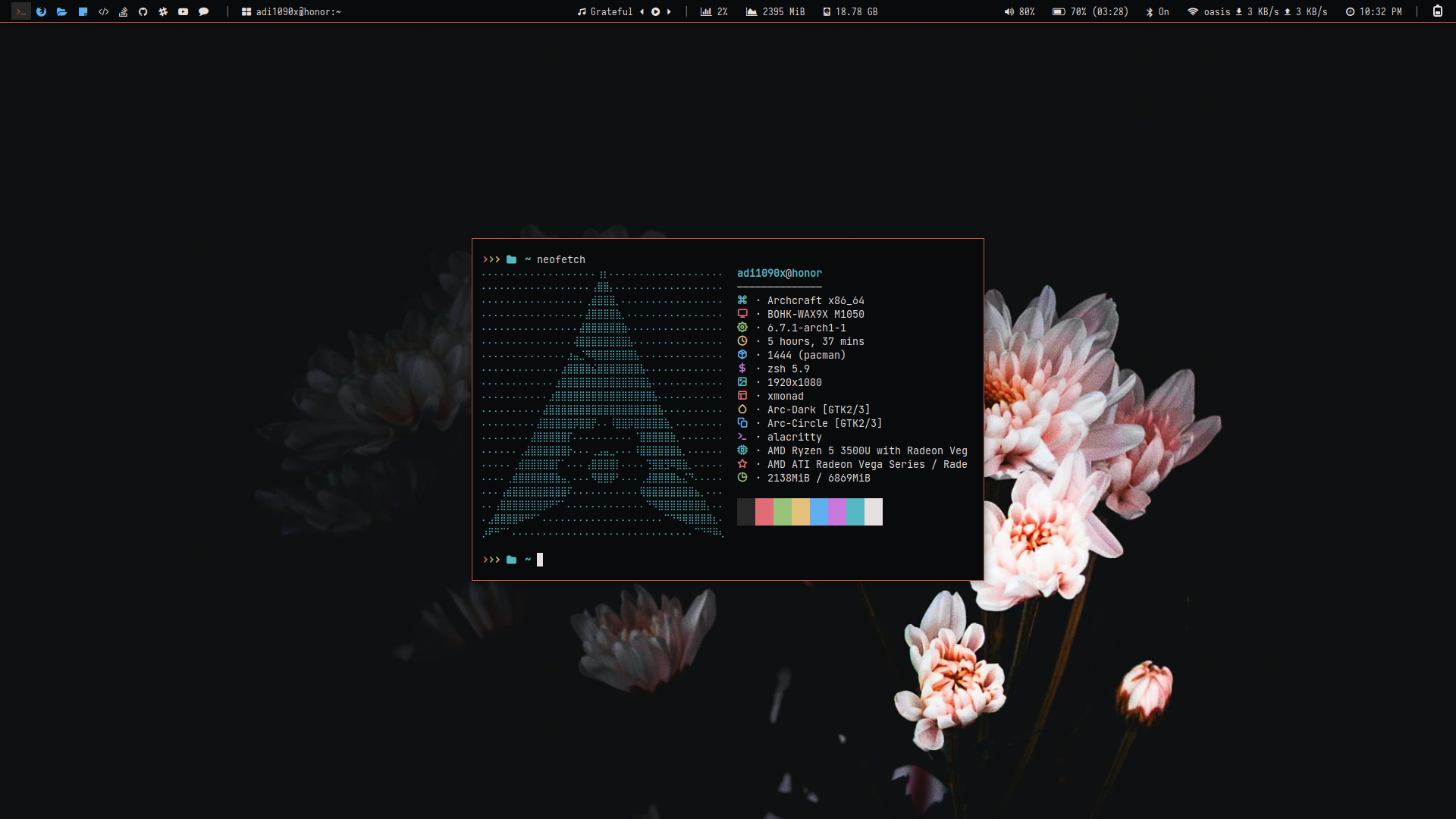 | 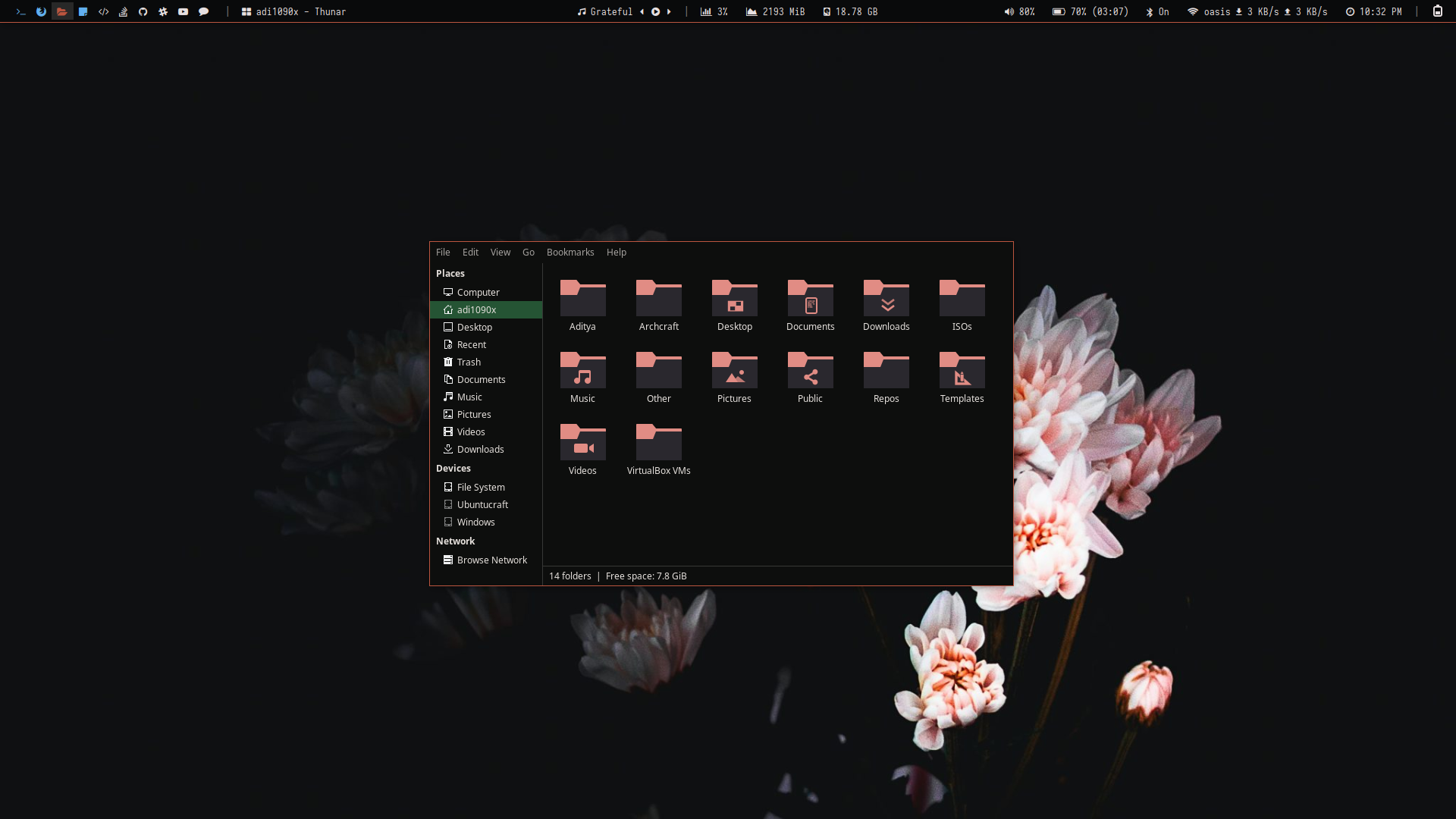 | 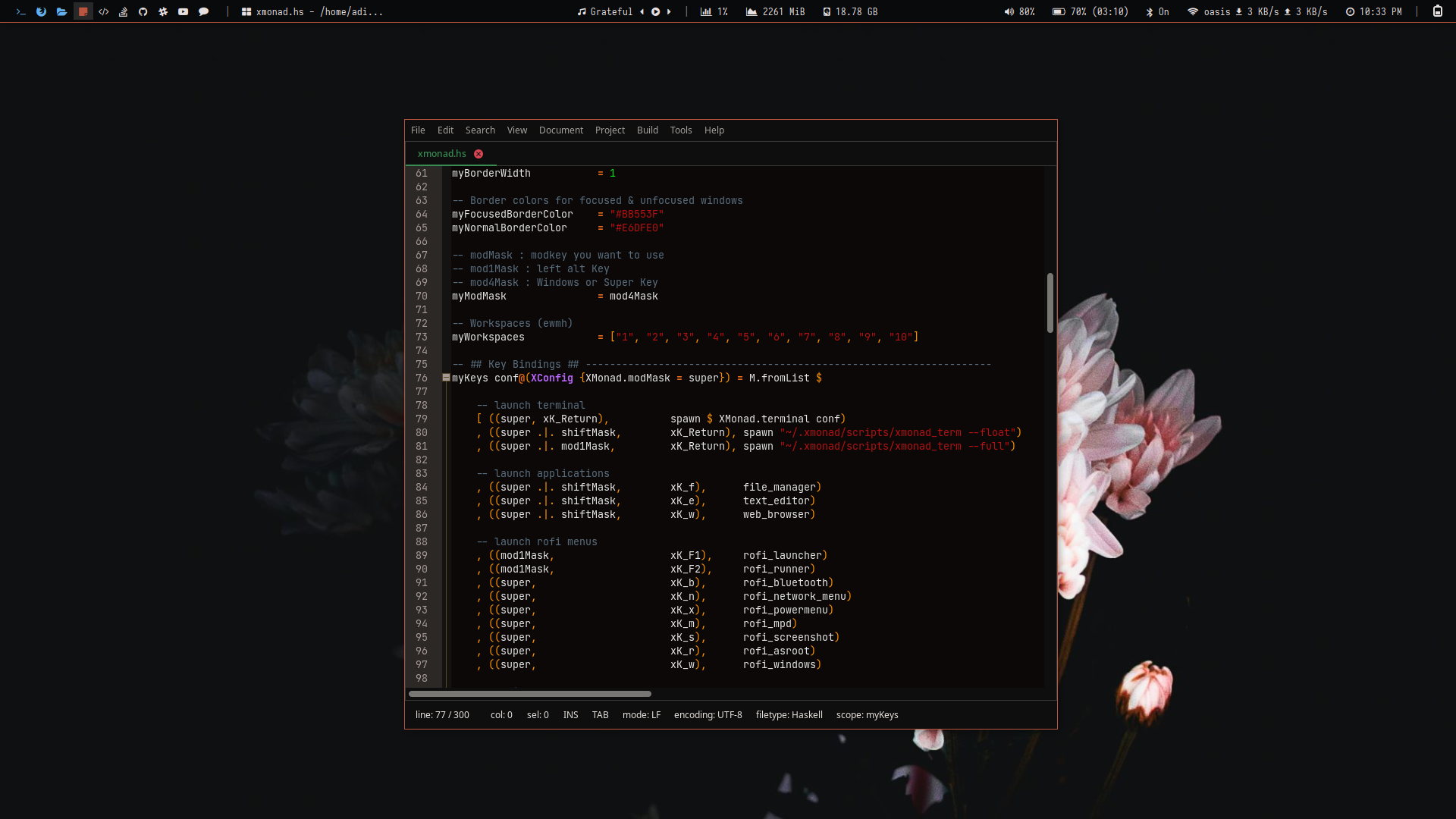 | 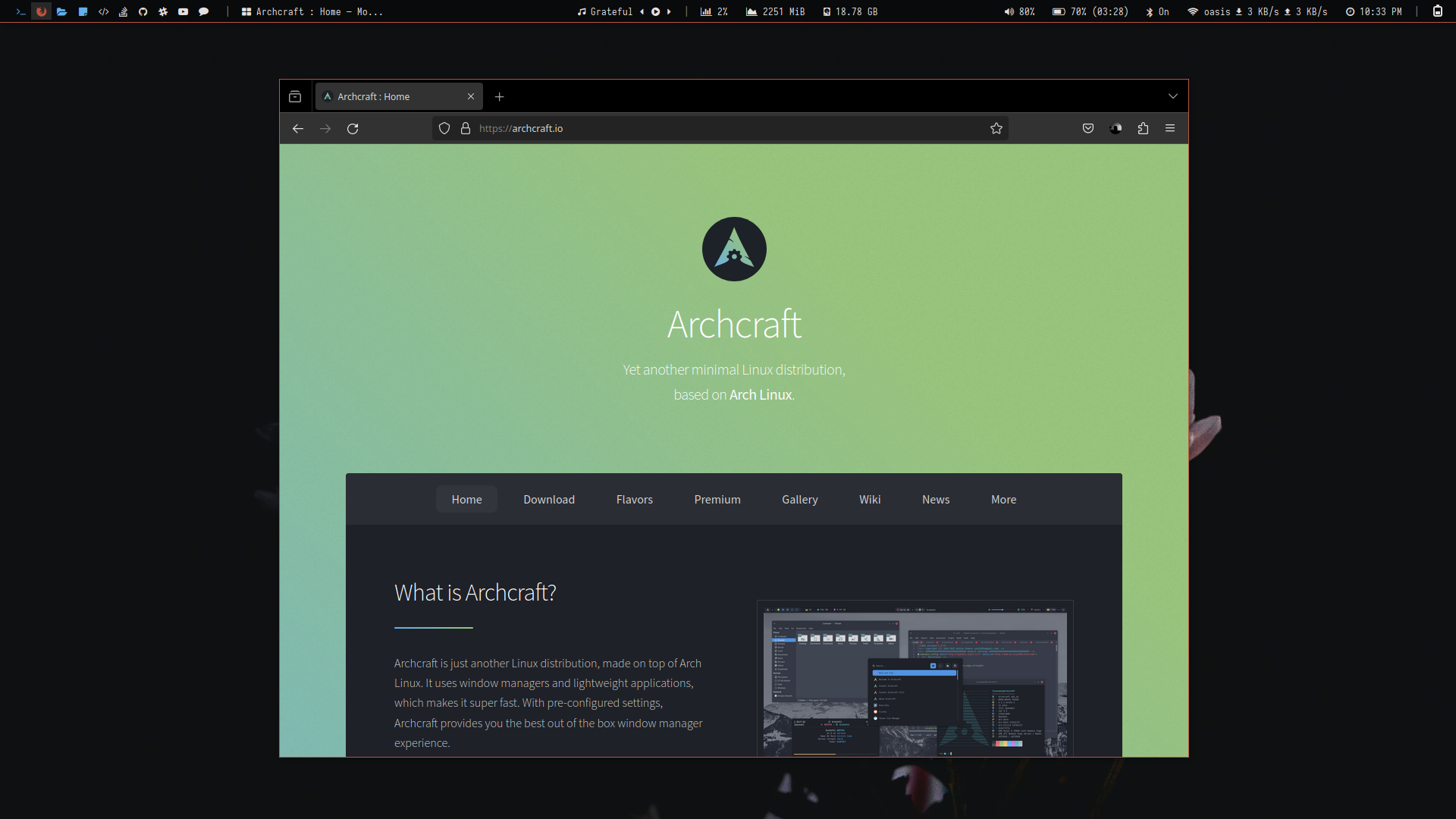 |
| Desktop 5 | Desktop 6 | Desktop 7 | Desktop 8 |
|---|---|---|---|
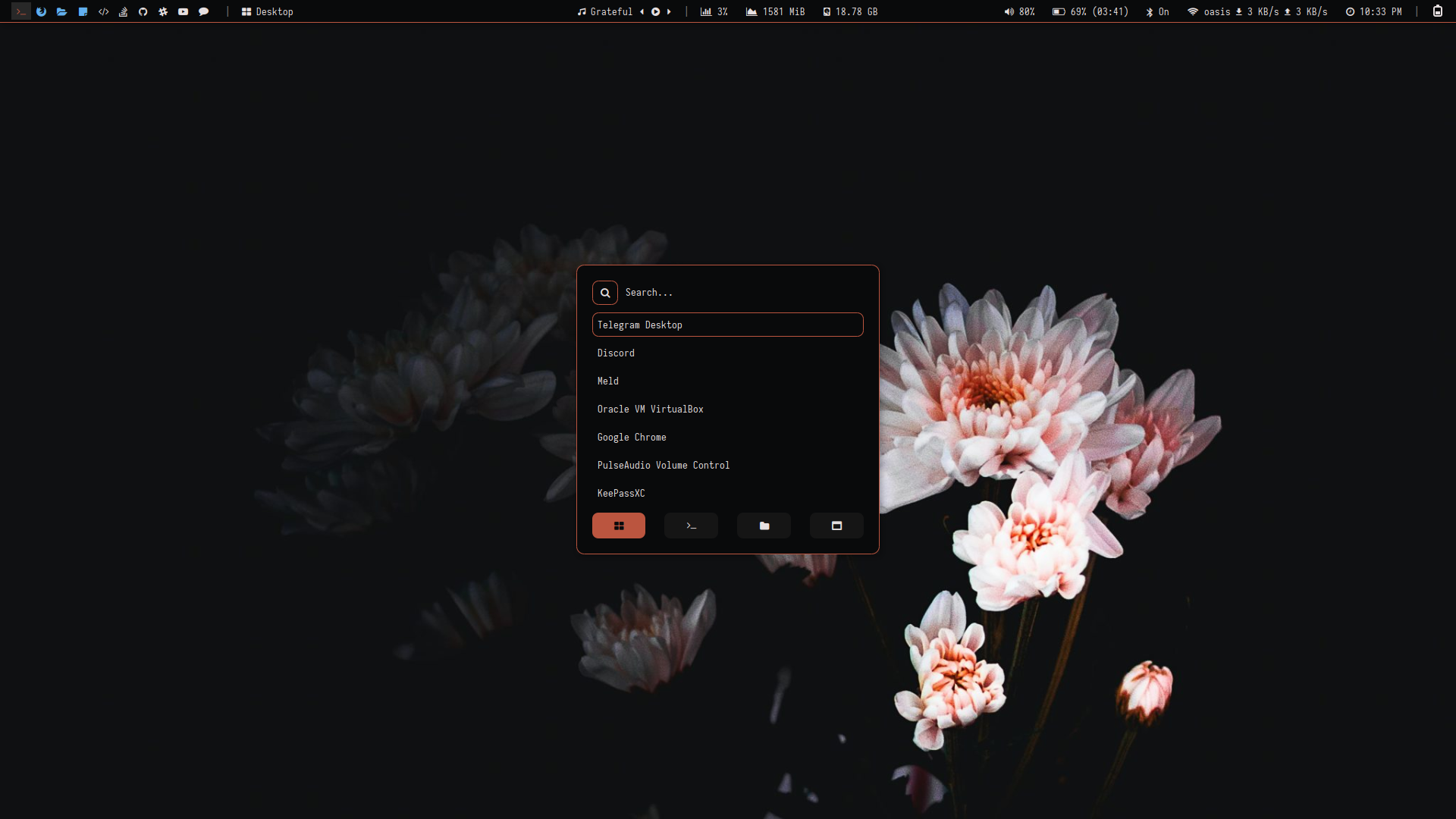 |  | 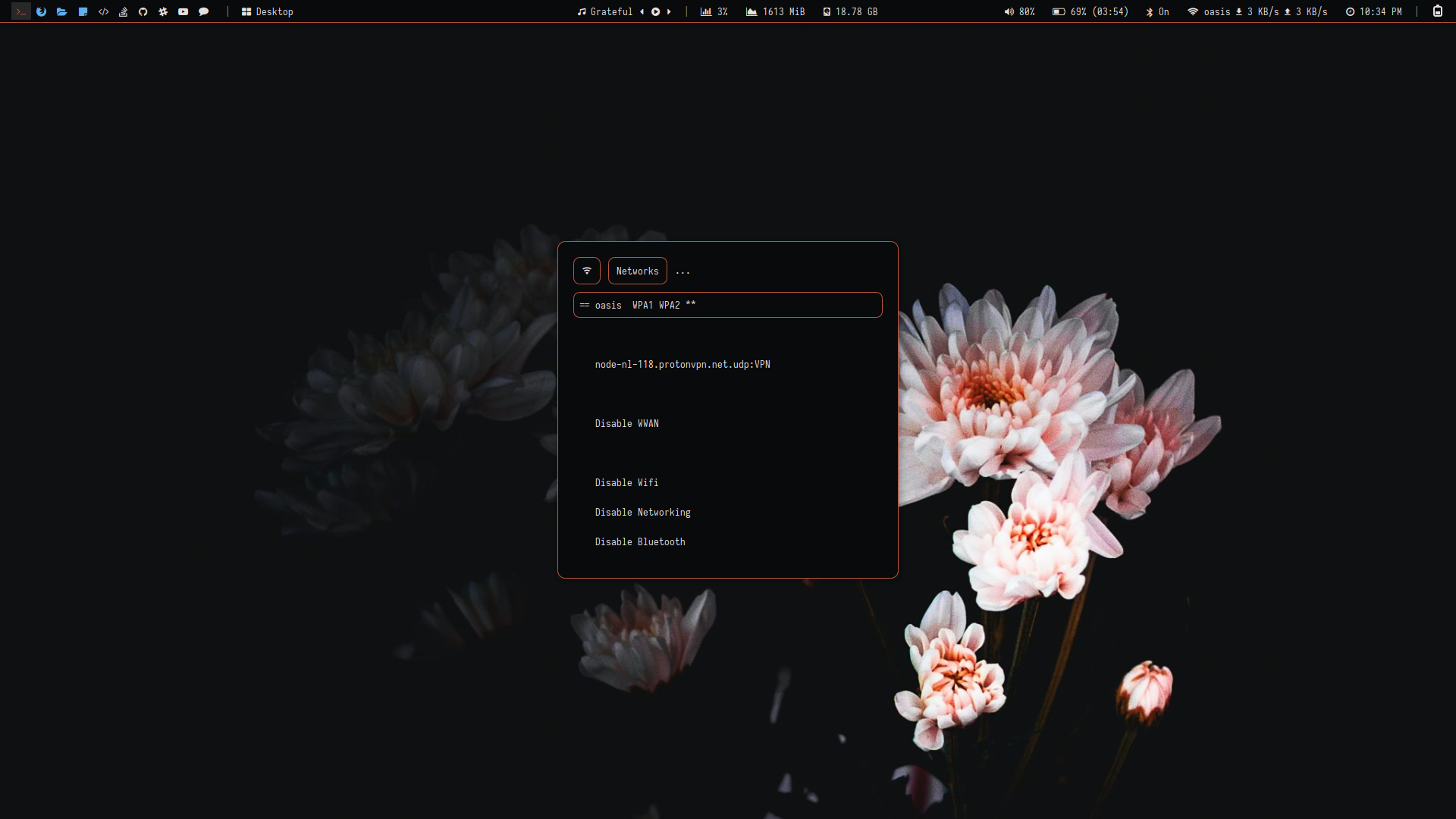 | 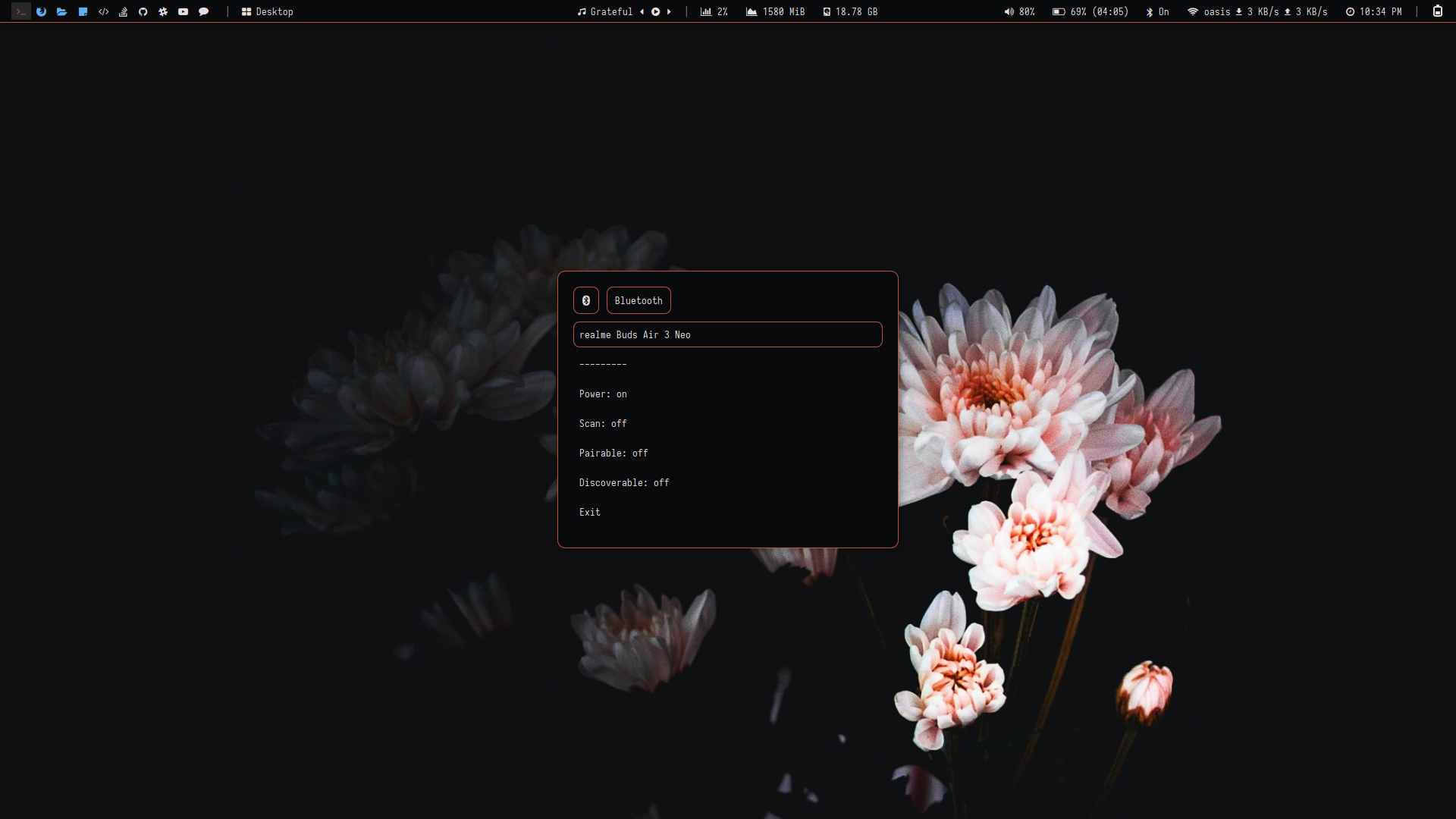 |
| Desktop 9 | Desktop 10 | Desktop 11 | Desktop 12 |
|---|---|---|---|
 | 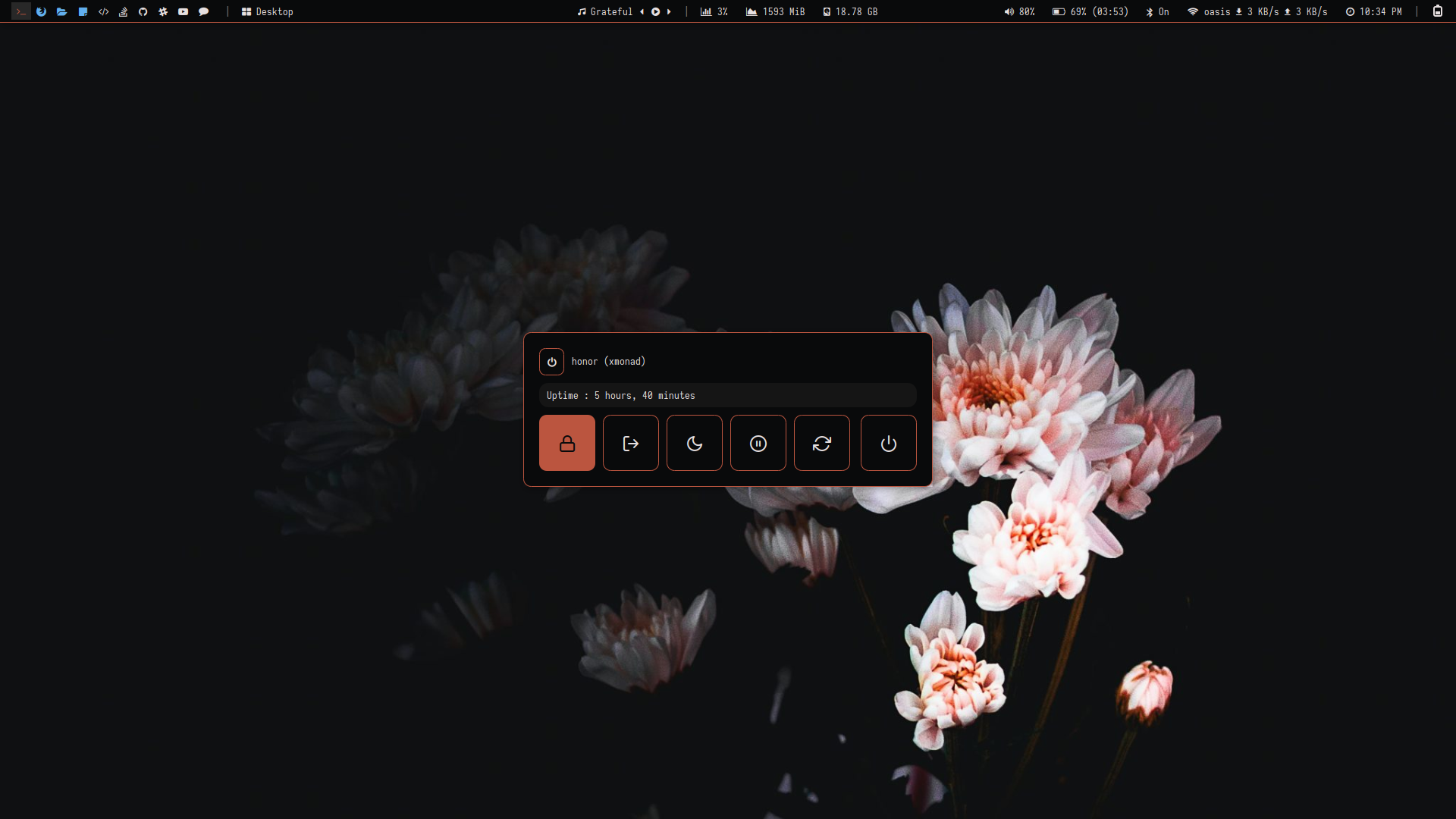 |  | 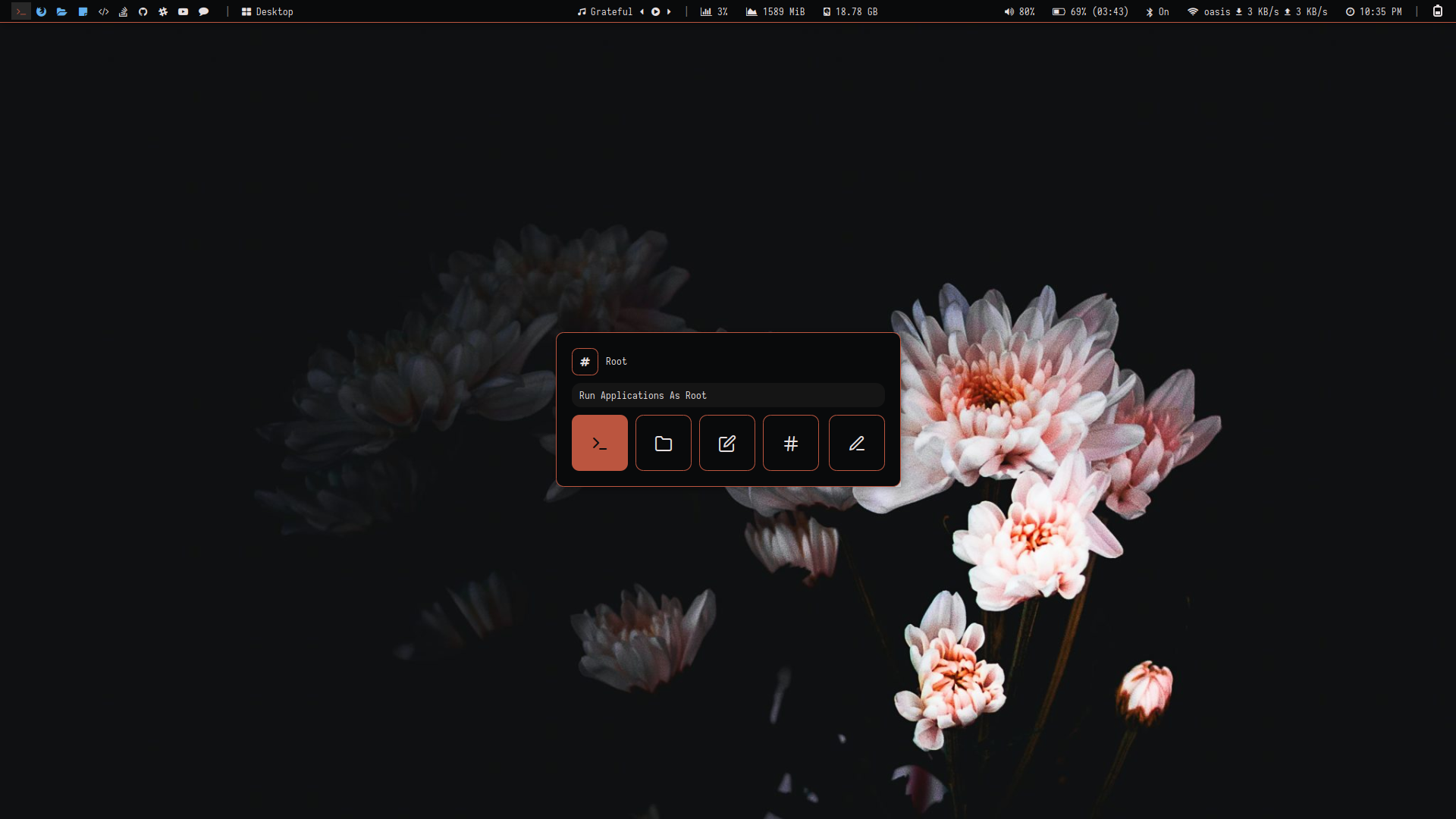 |
| Desktop 13 | Desktop 14 | Desktop 15 | Desktop 16 |
|---|---|---|---|
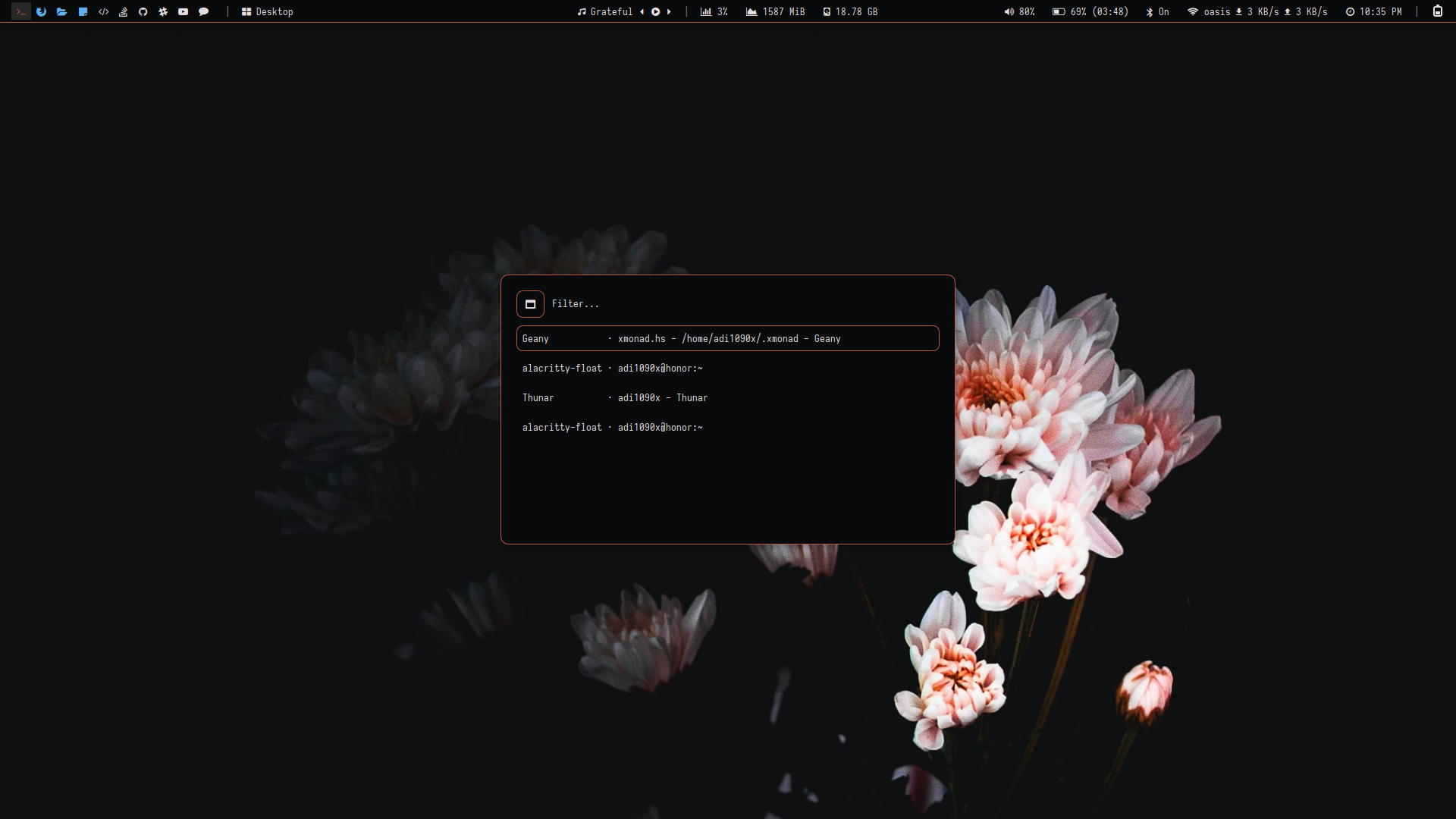 | 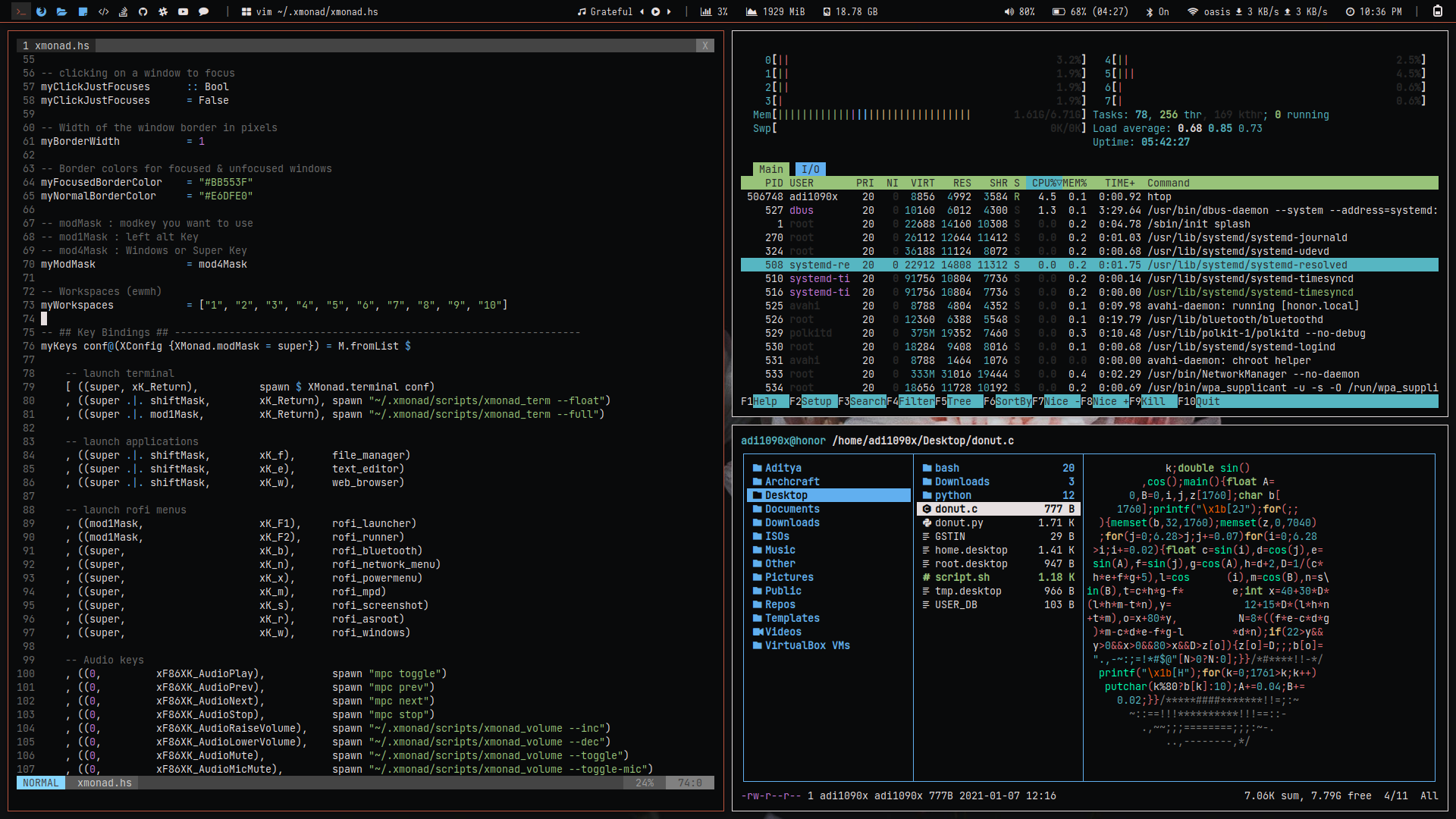 | 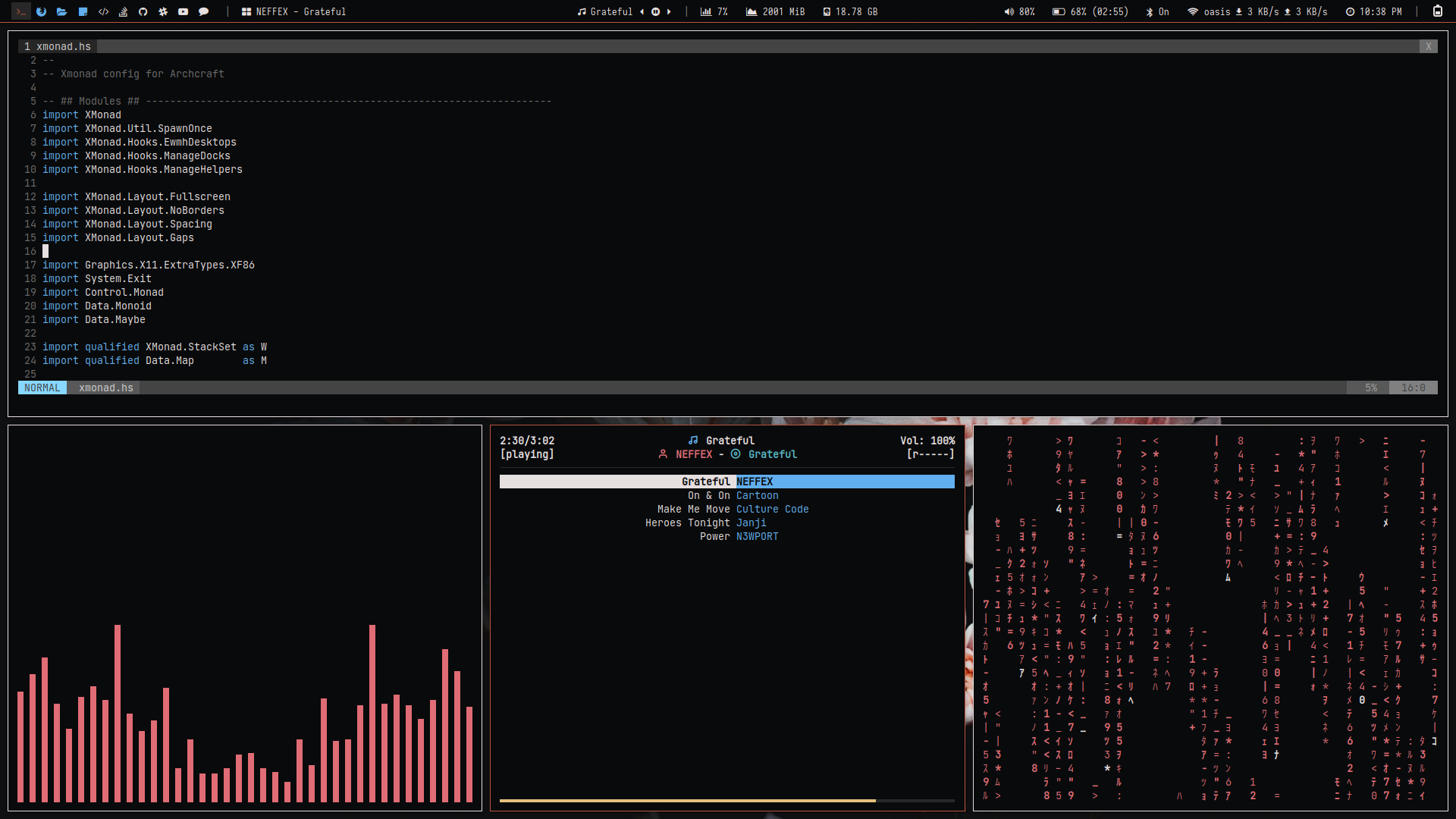 | 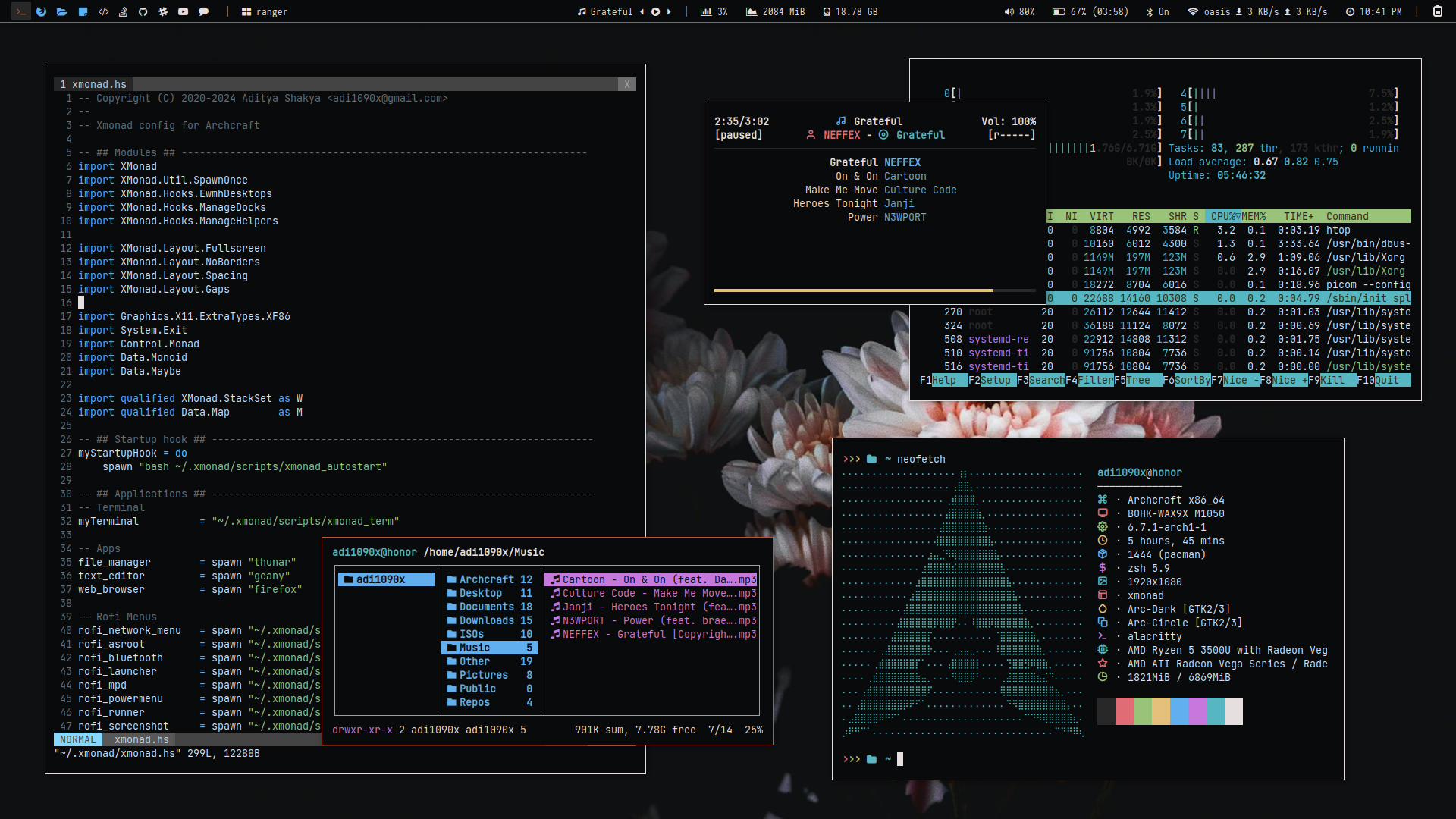 |
Themes
- Regular
- Premium
- Random
There's only one theme available on regular Xmonad.
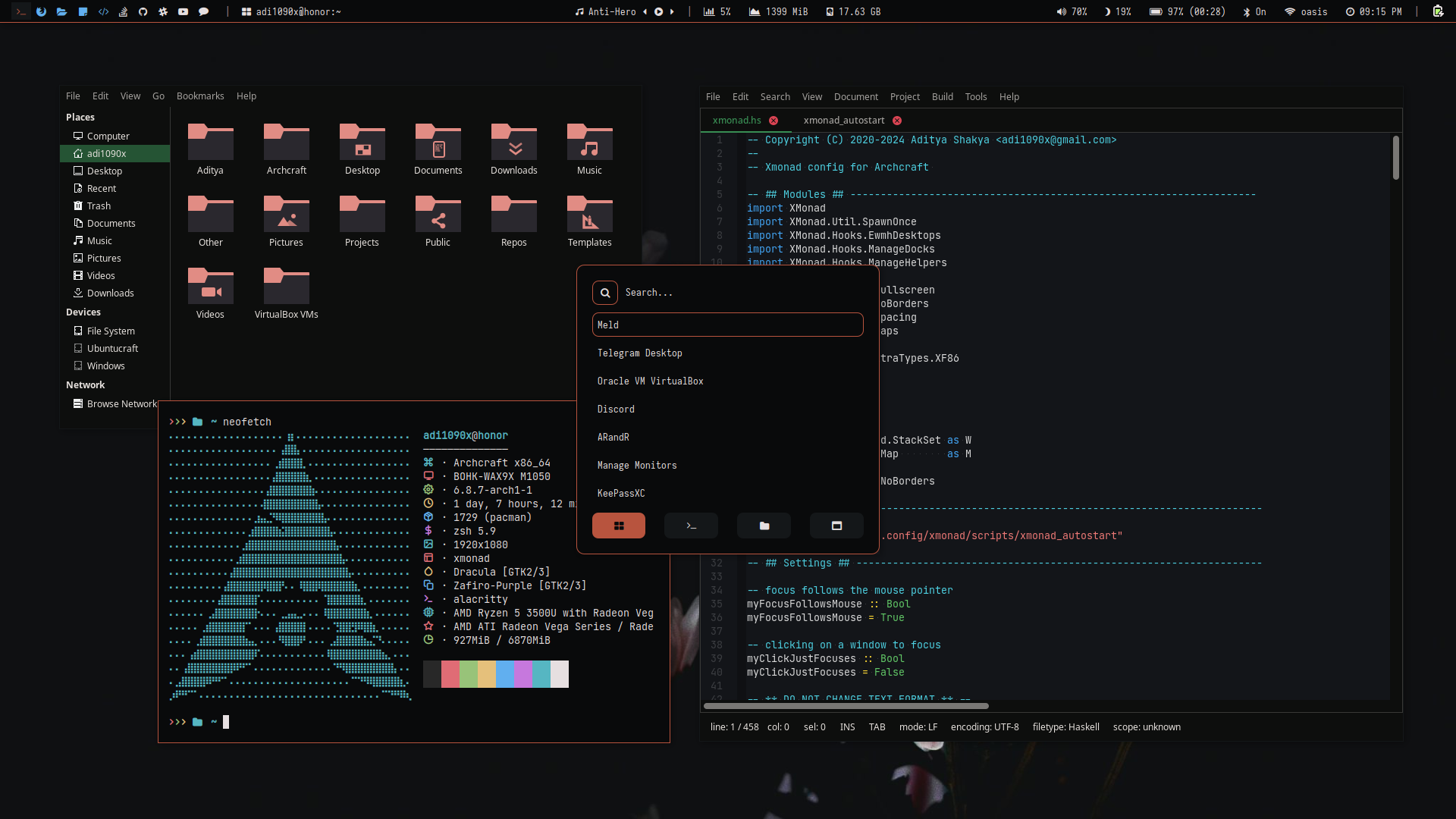
There are 27 styles (plus infinite auto-generated themes with pywal) available for Xmonad premium.
To Change the theme/style, Press SUPER + T and select the theme/style from the applet.
| Theme 1 | Theme 2 | Theme 3 | Theme 4 | Theme 5 |
|---|---|---|---|---|
 | 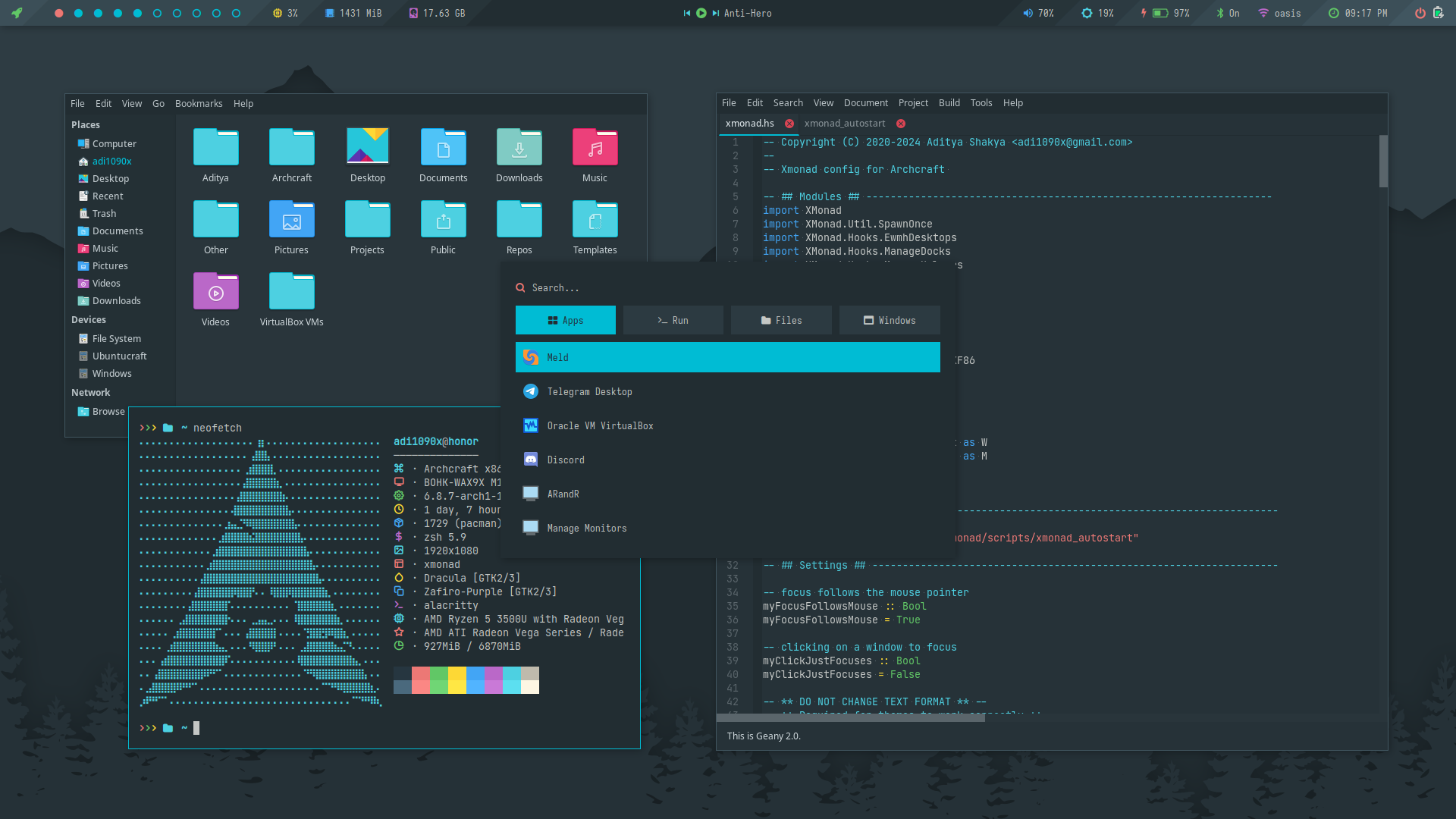 | 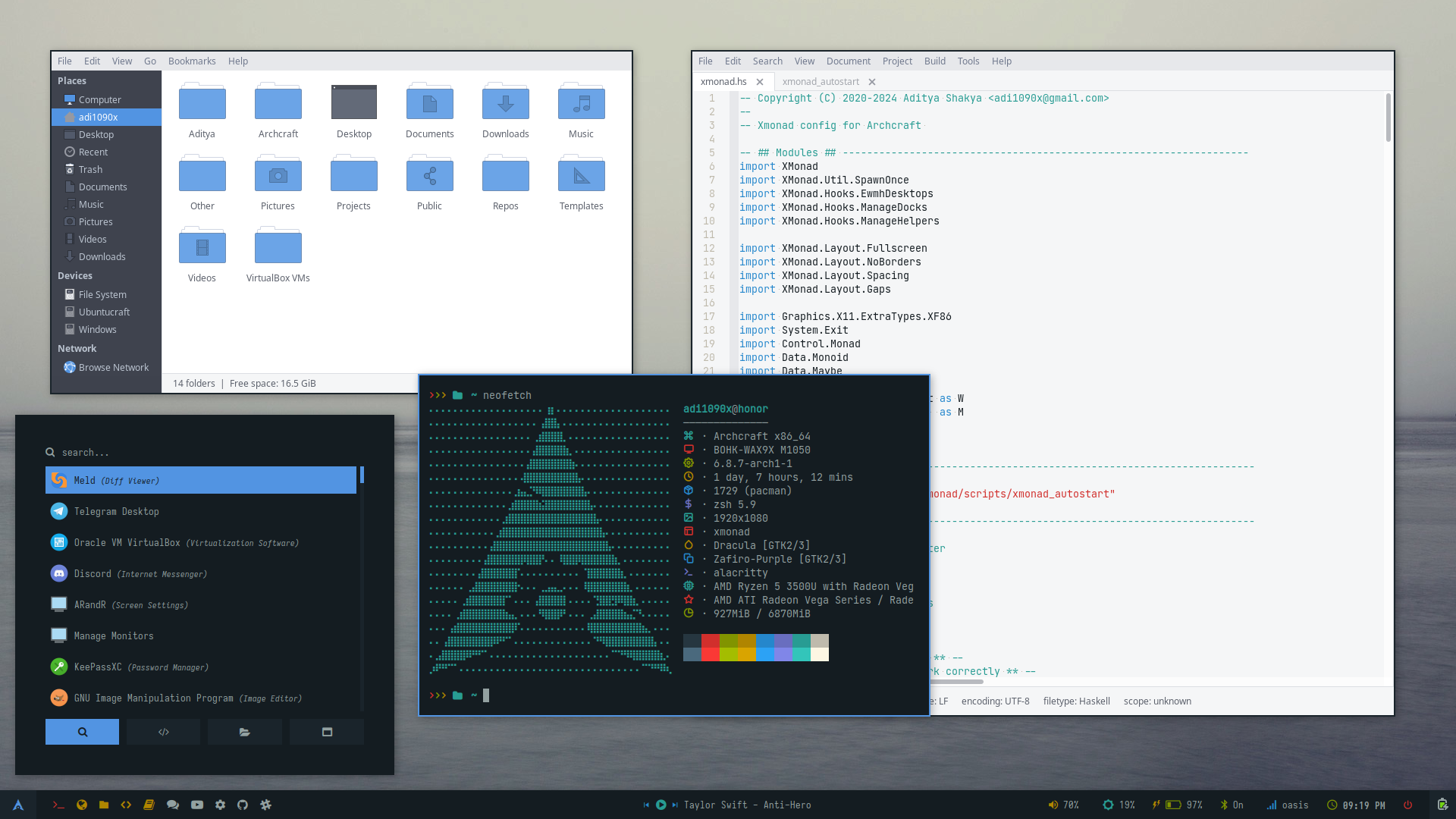 | 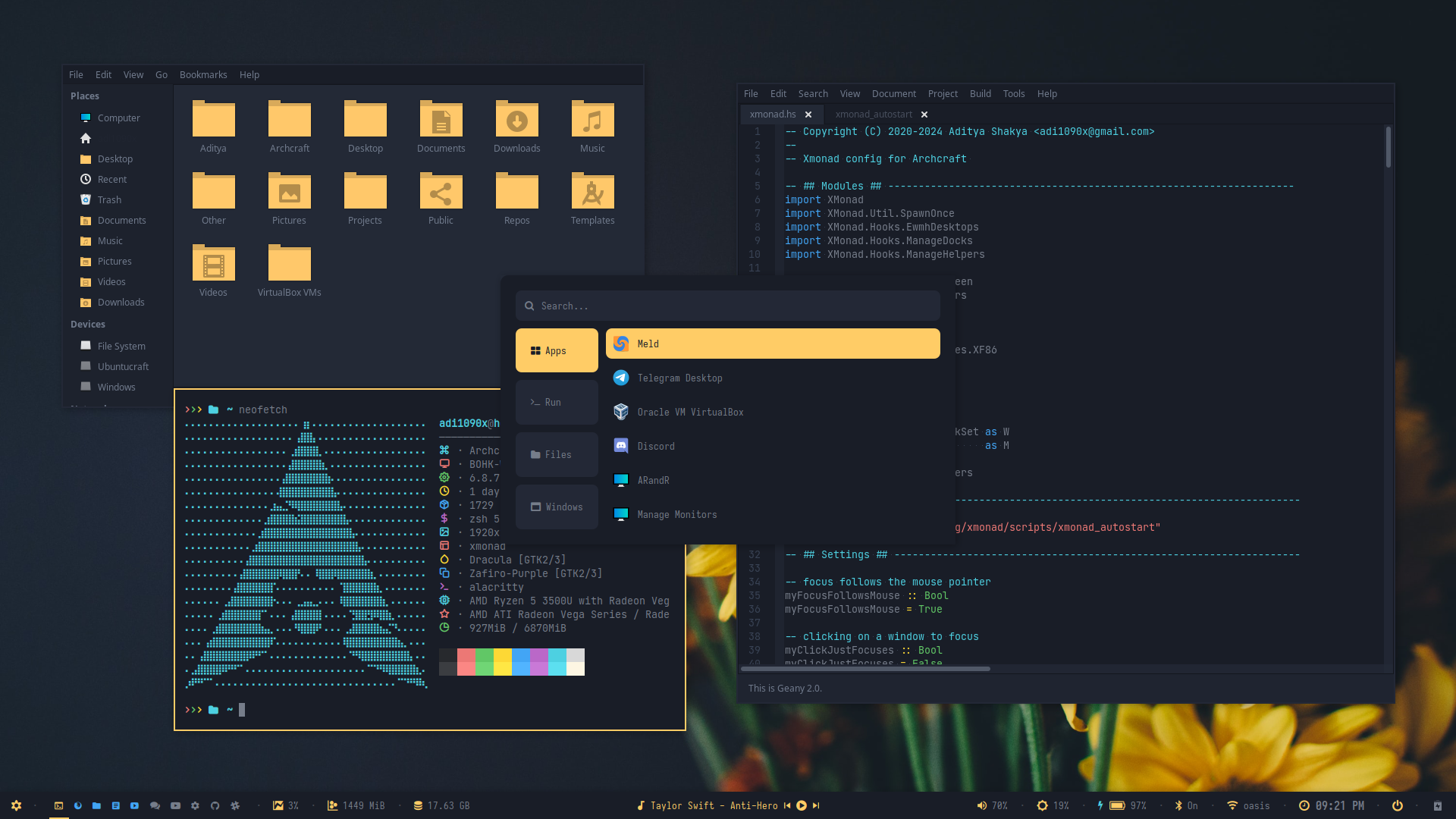 |  |
| Theme 6 | Theme 7 | Theme 8 | Theme 9 | Theme 10 |
|---|---|---|---|---|
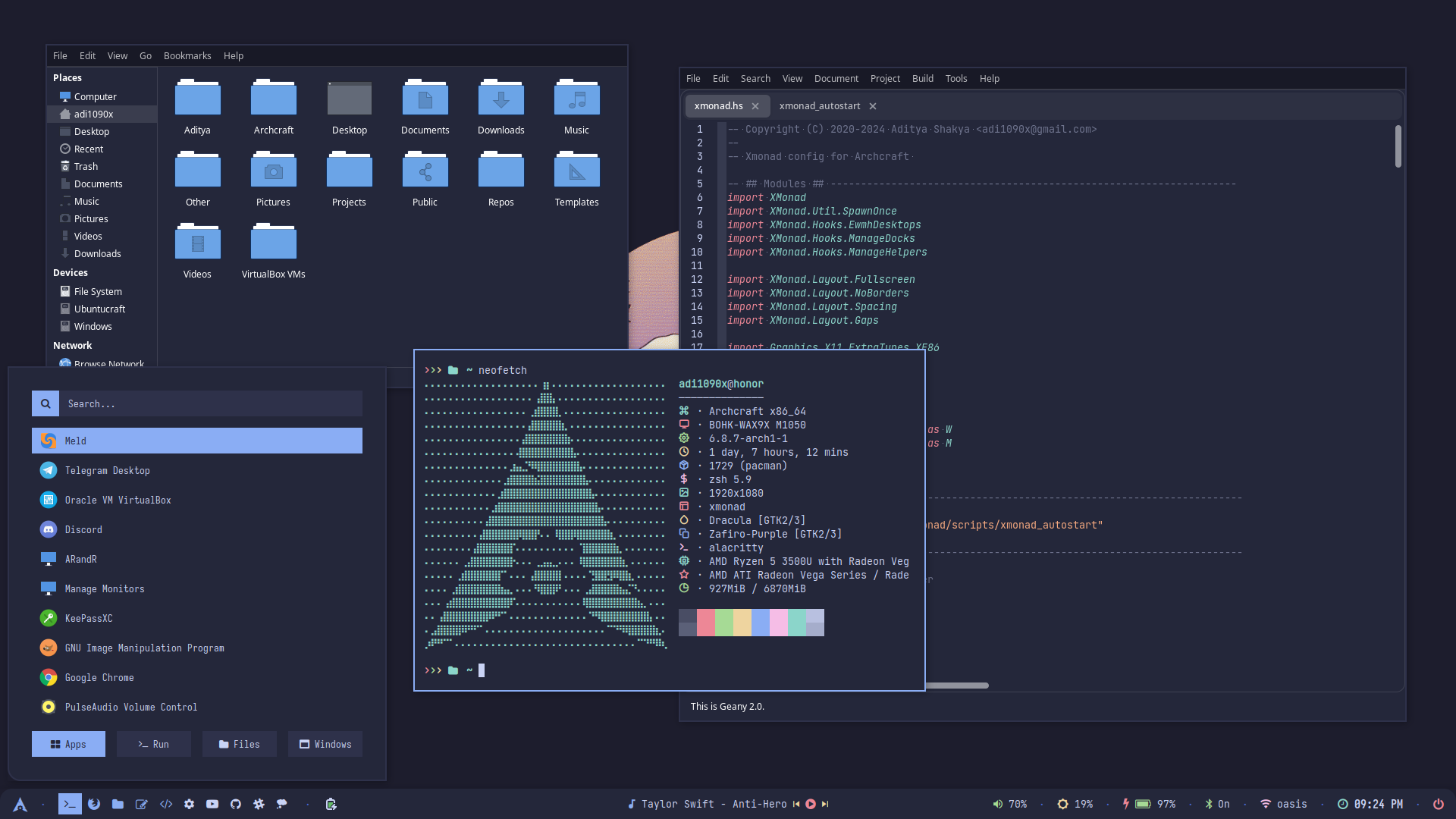 | 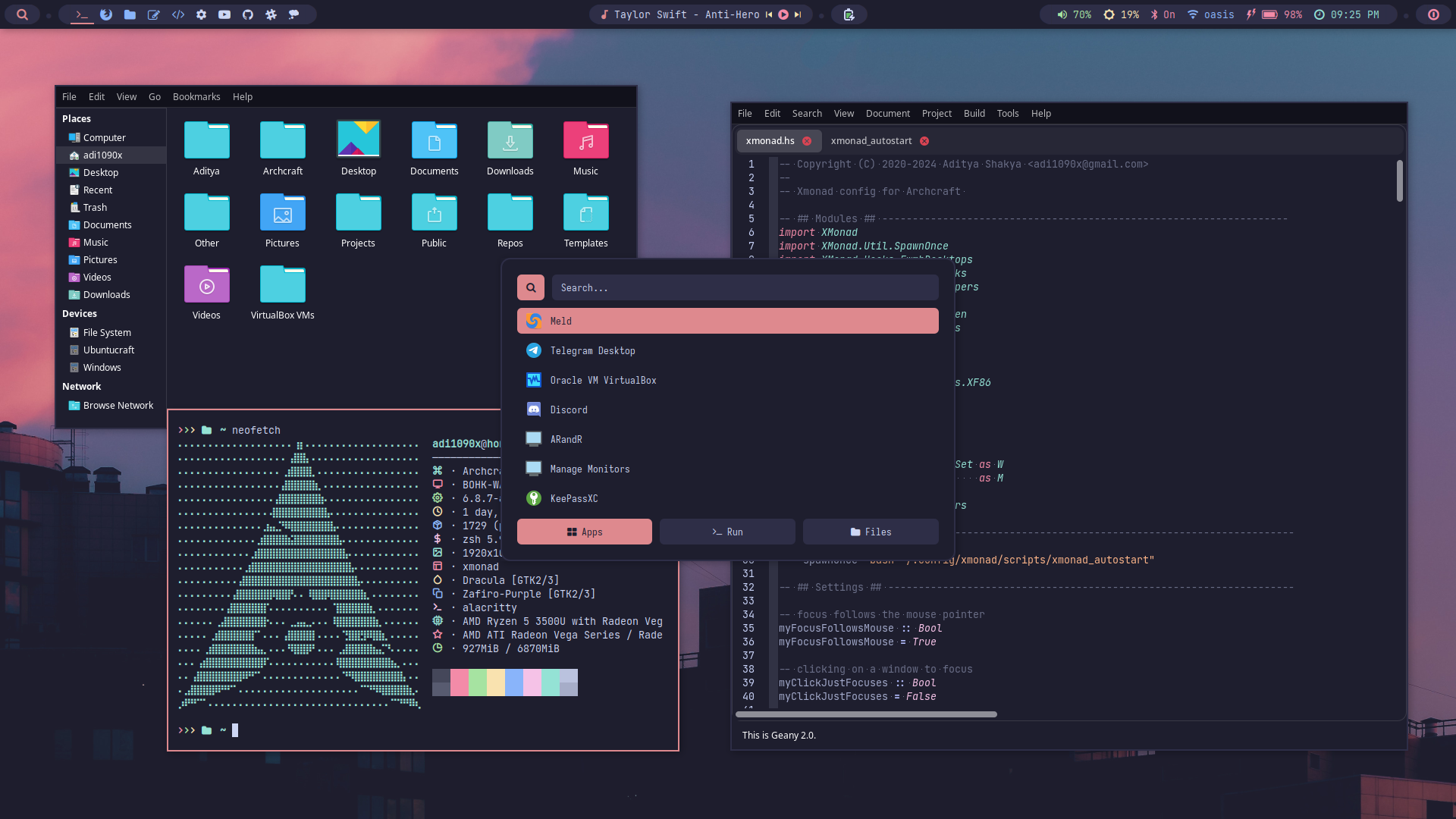 | 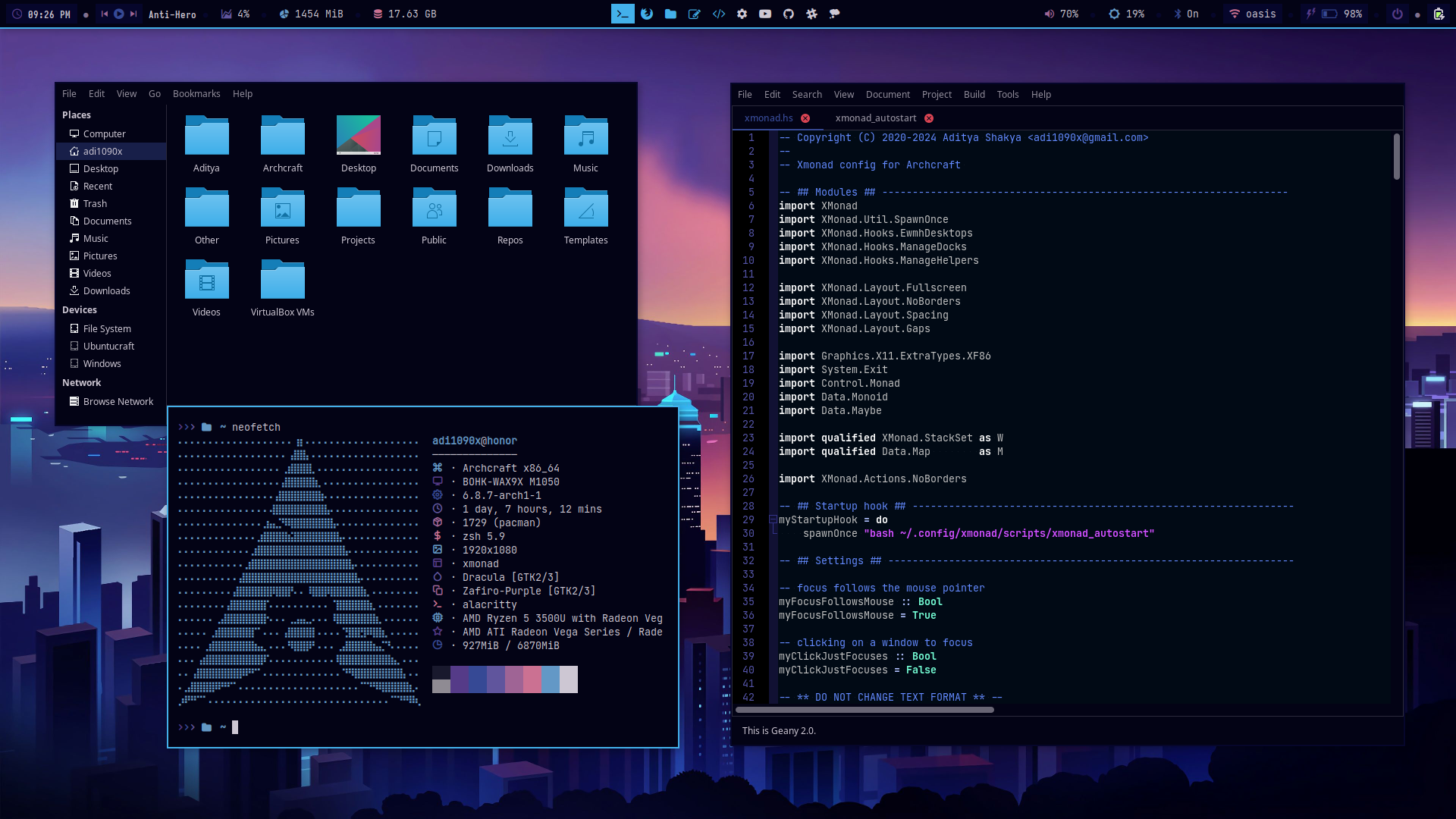 | 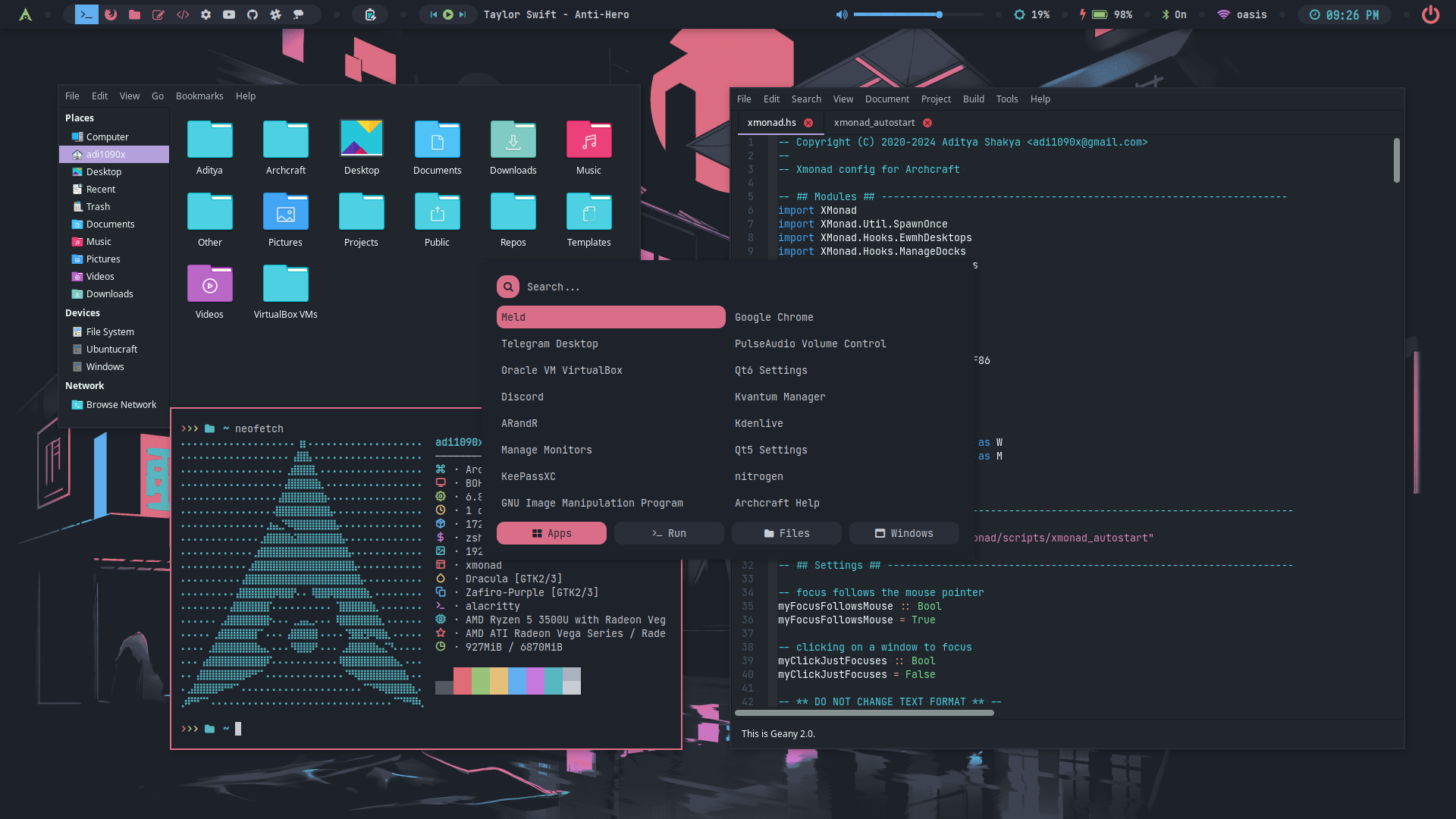 | 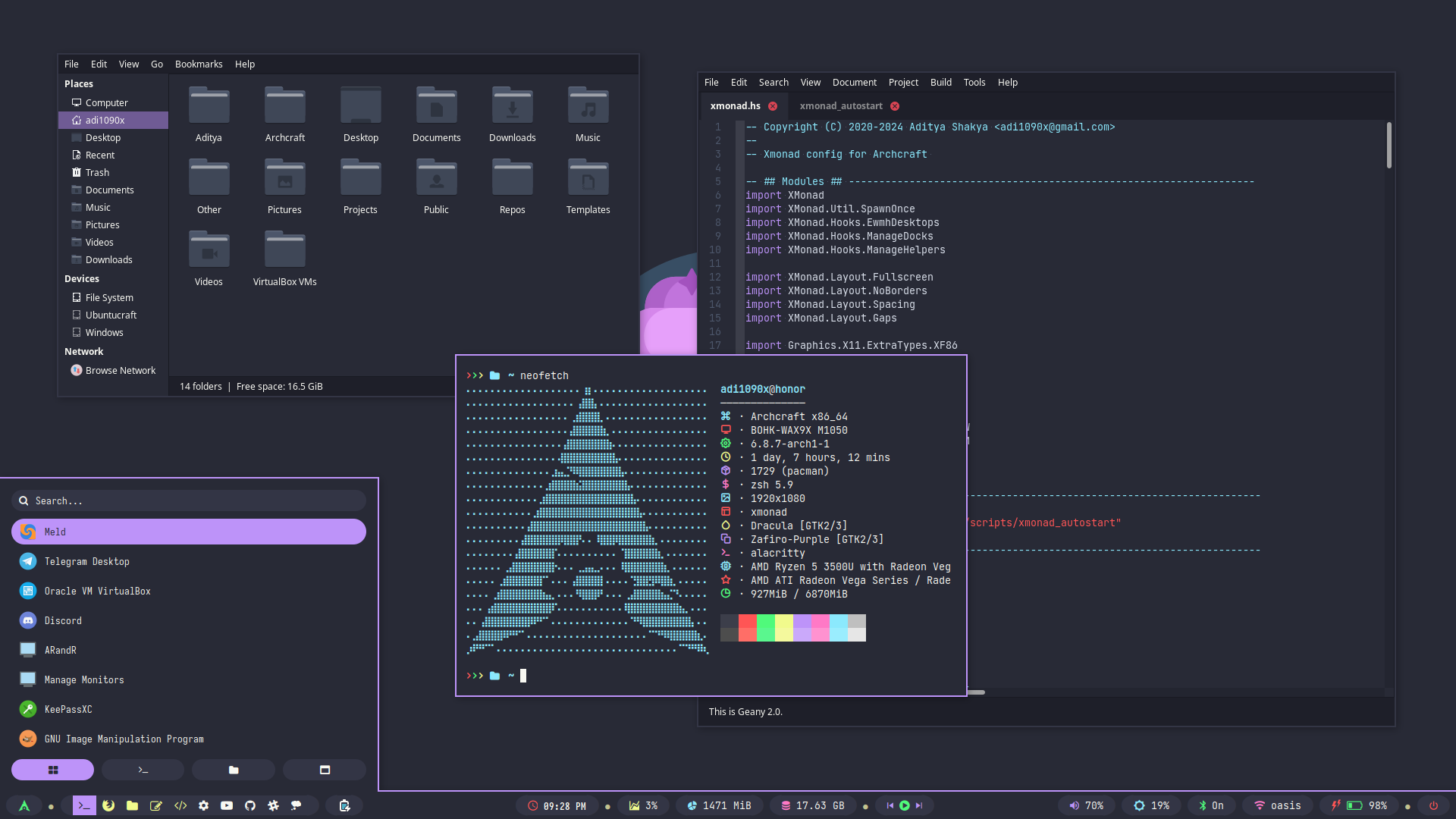 |
| Theme 11 | Theme 12 | Theme 13 | Theme 14 | Theme 15 |
|---|---|---|---|---|
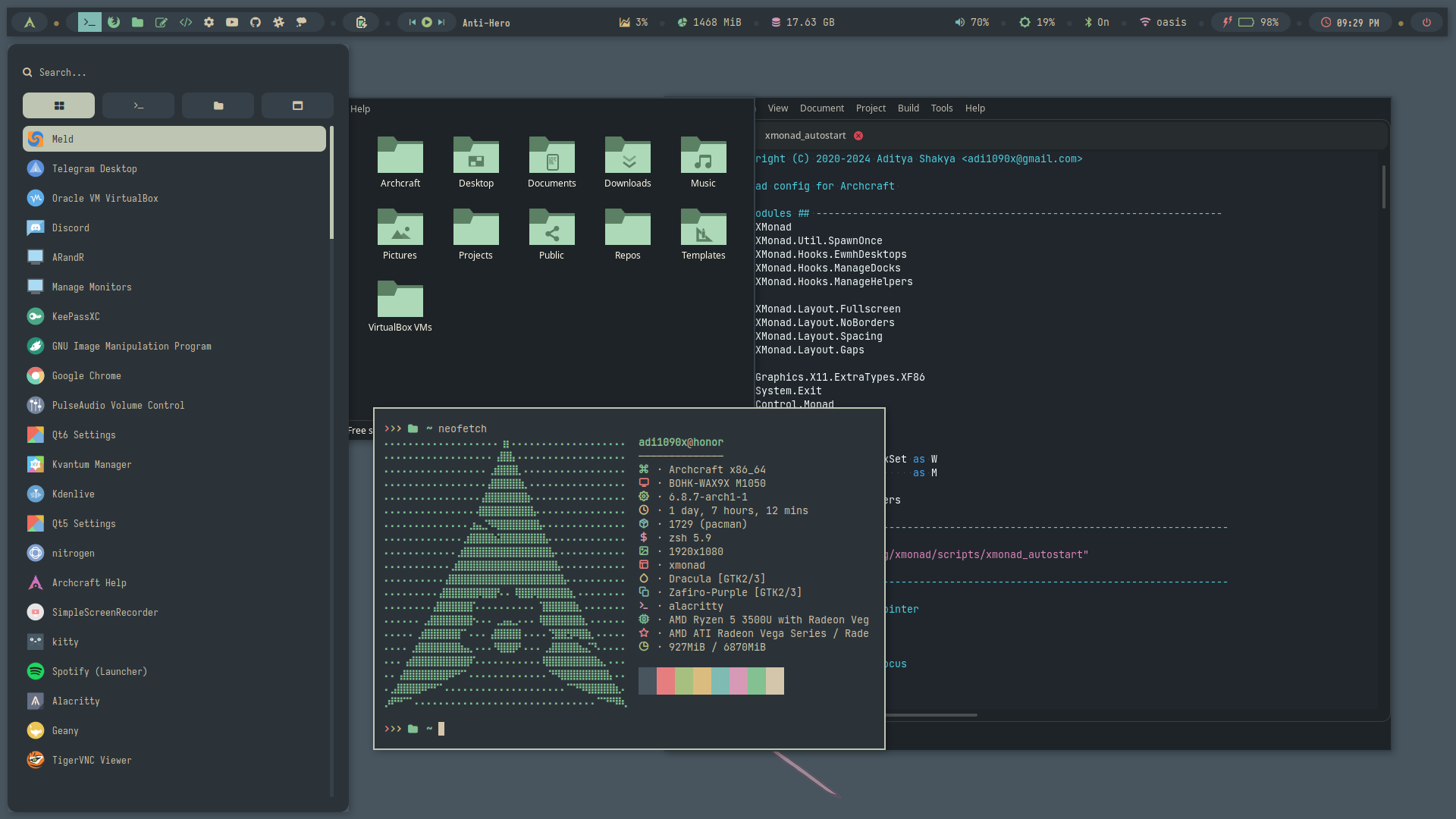 | 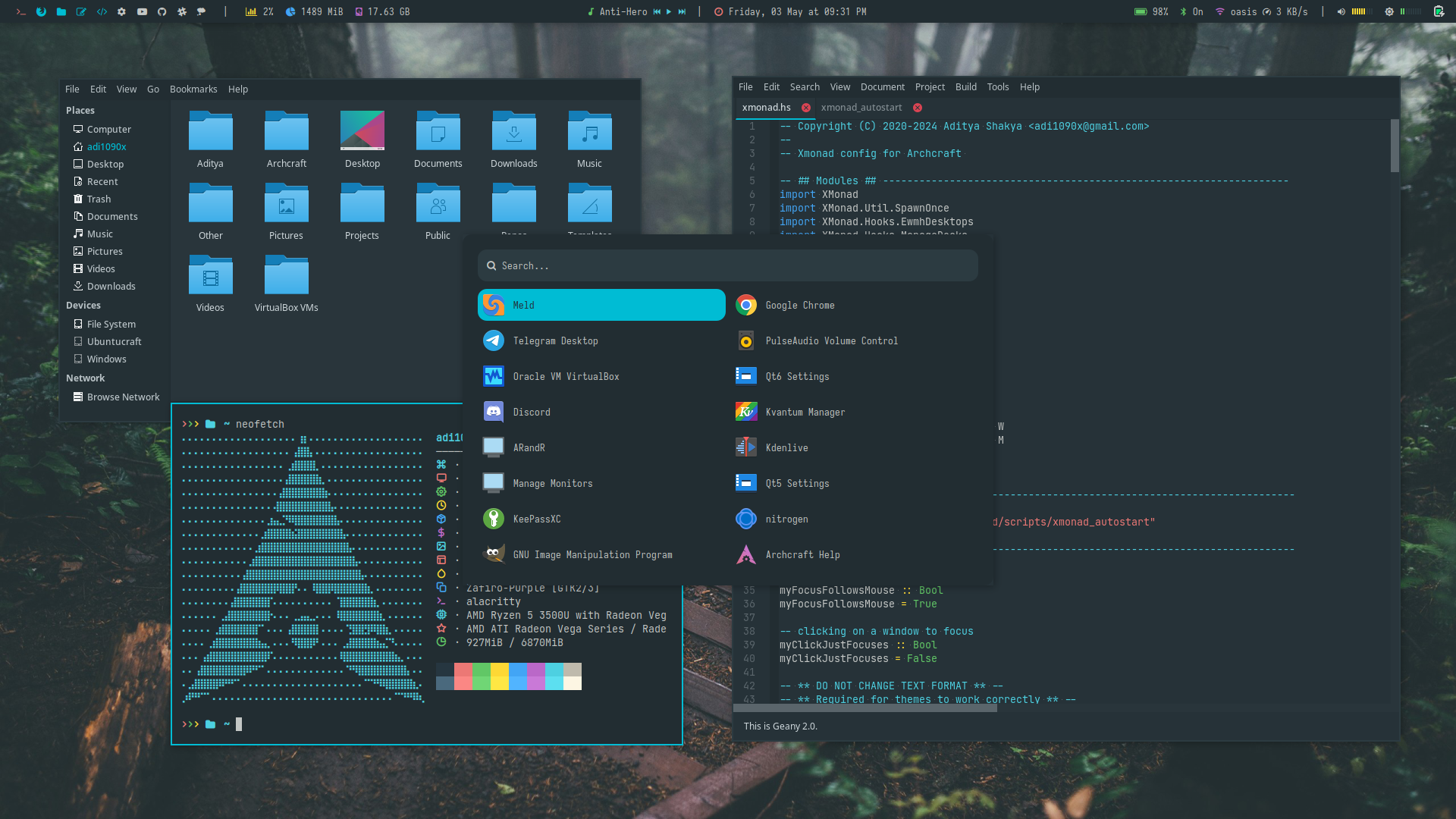 | 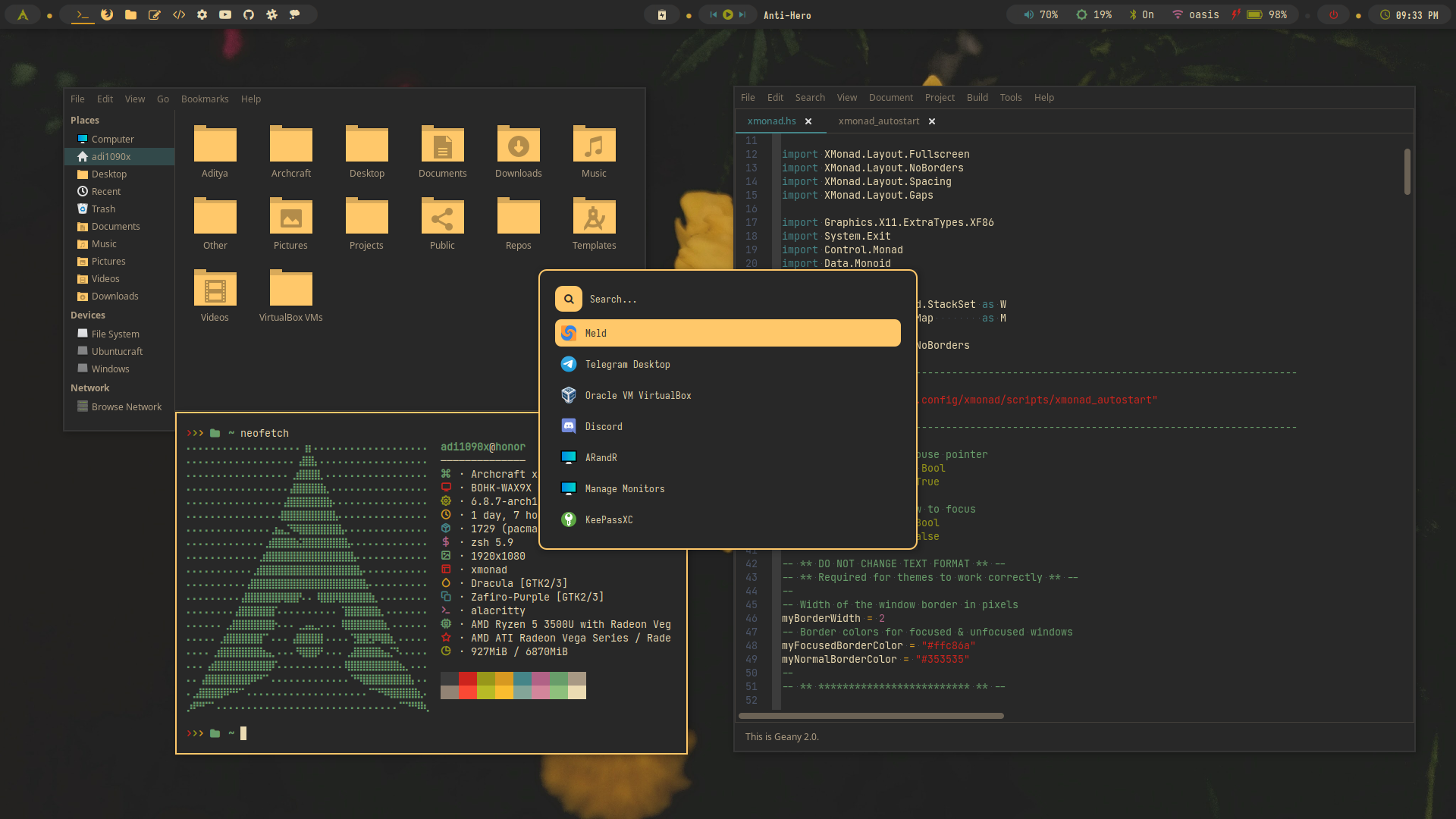 | 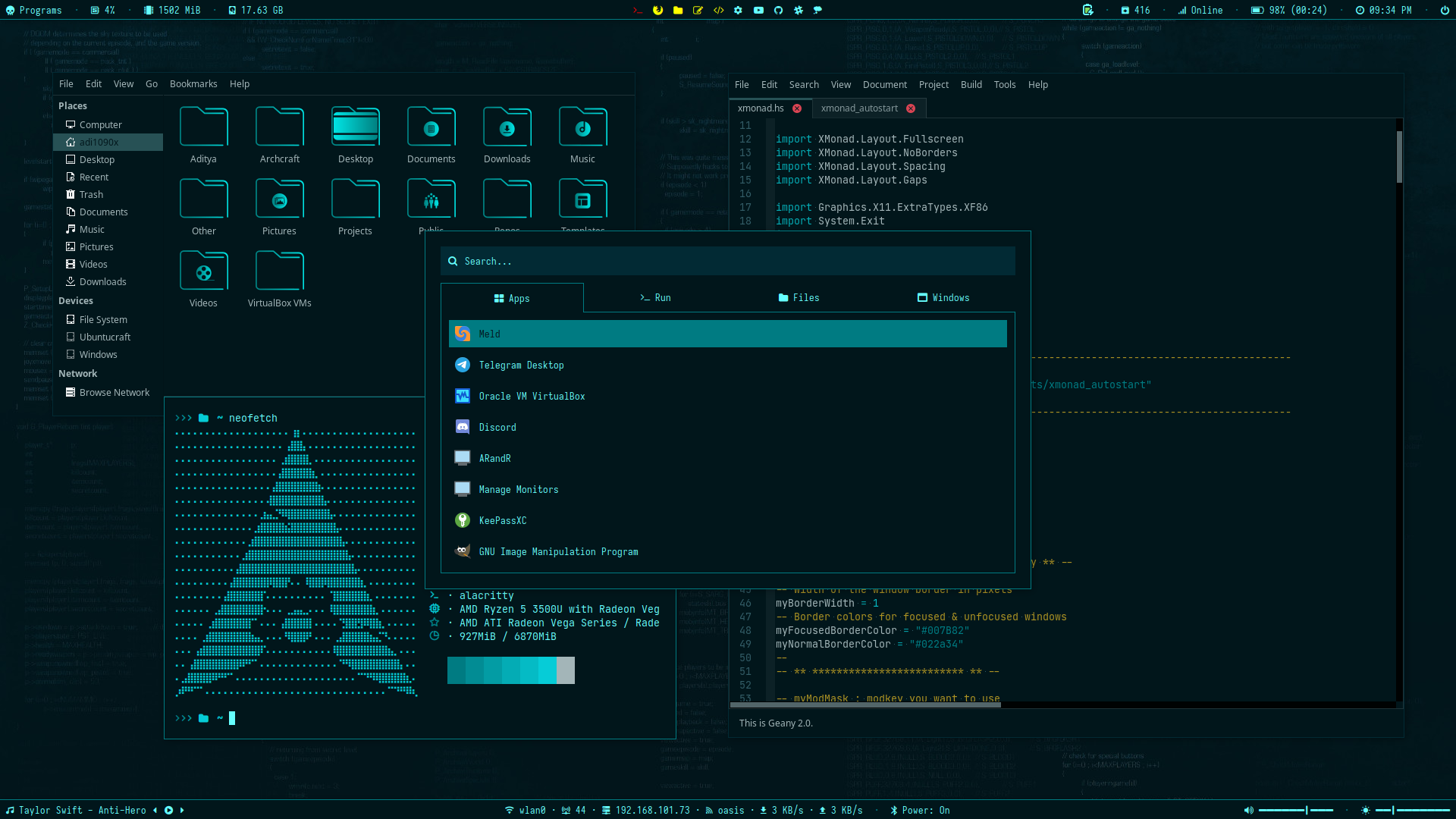 | 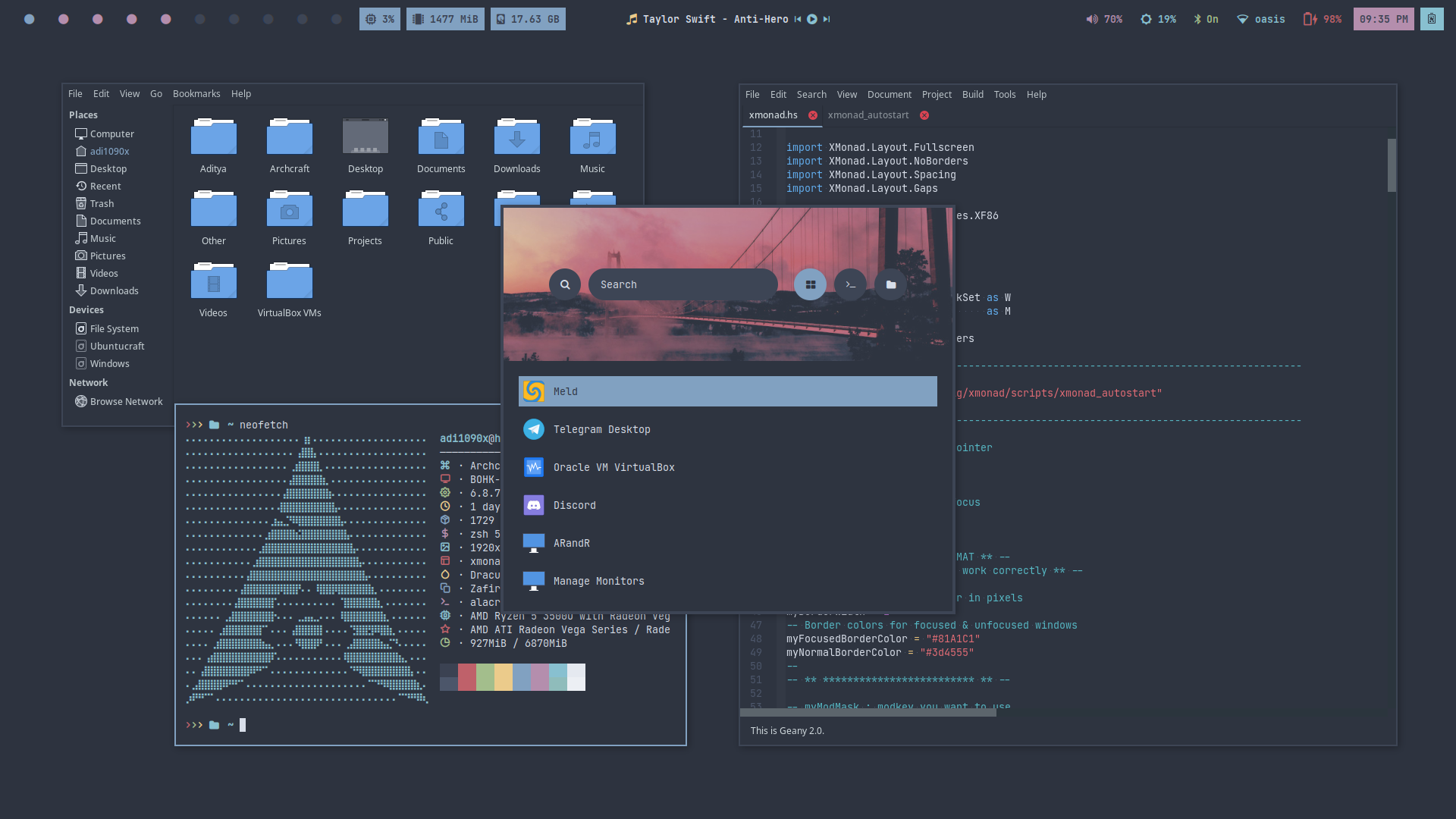 |
| Theme 16 | Theme 17 | Theme 18 | Theme 19 | Theme 20 |
|---|---|---|---|---|
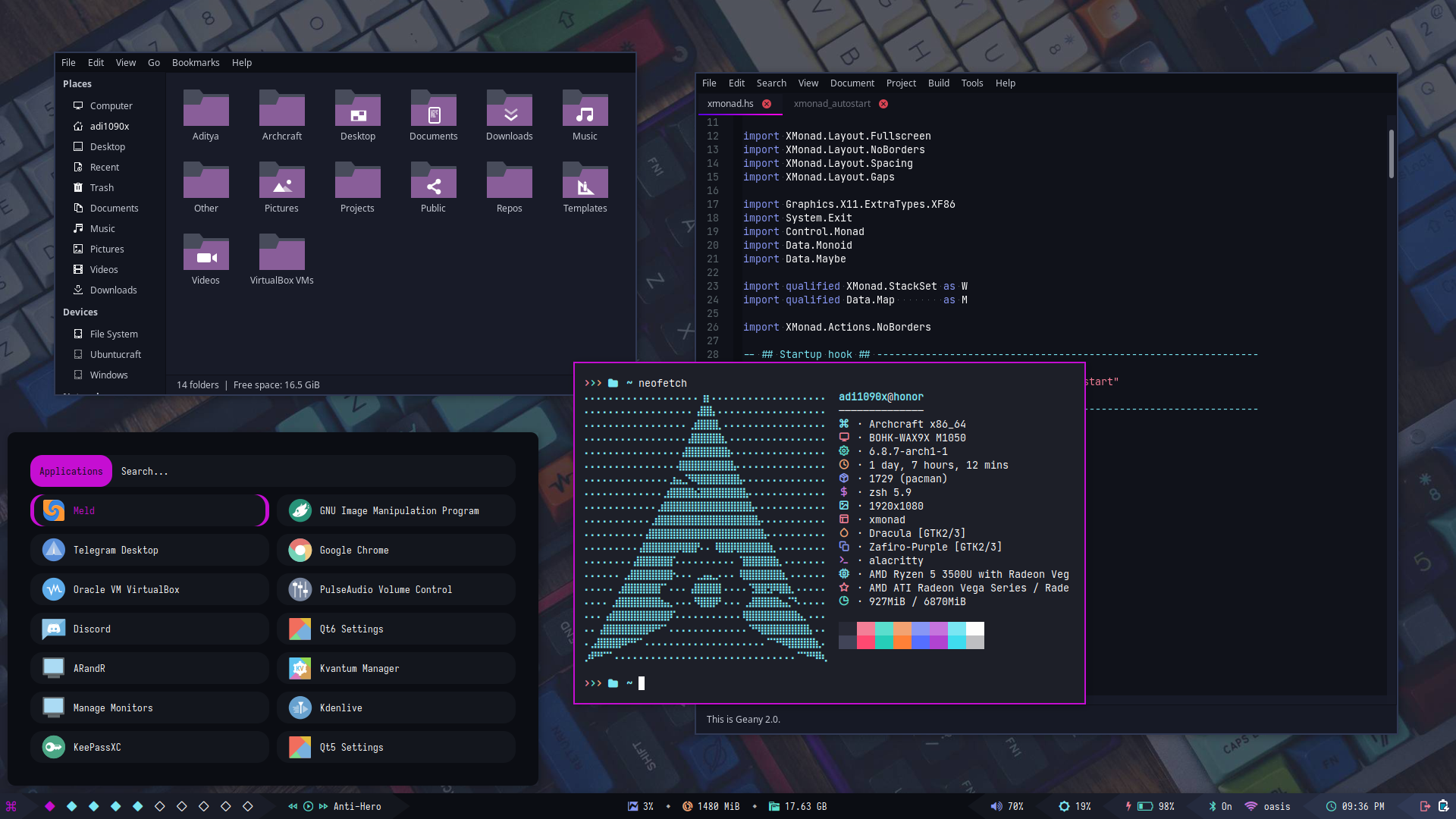 |  | 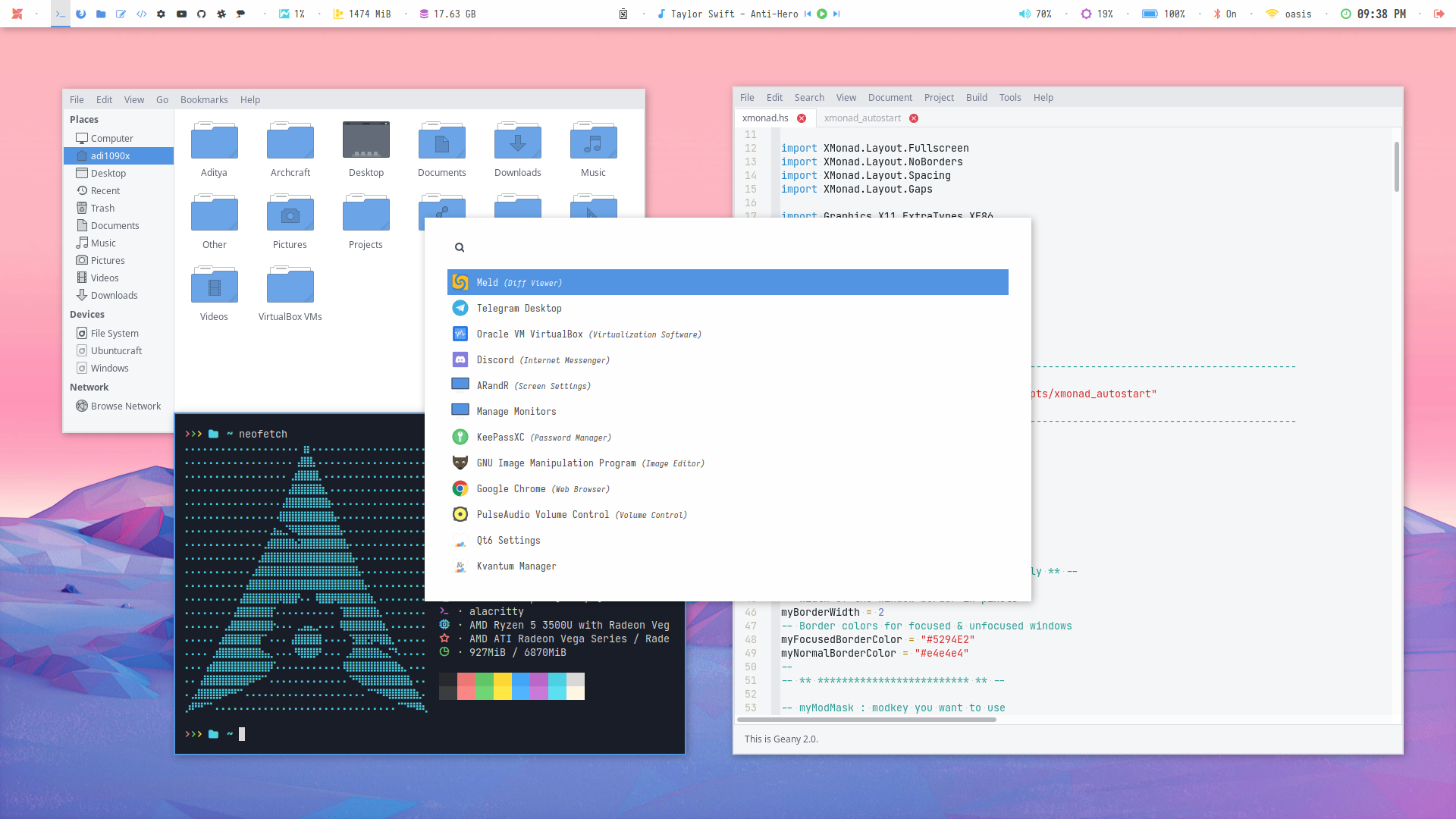 | 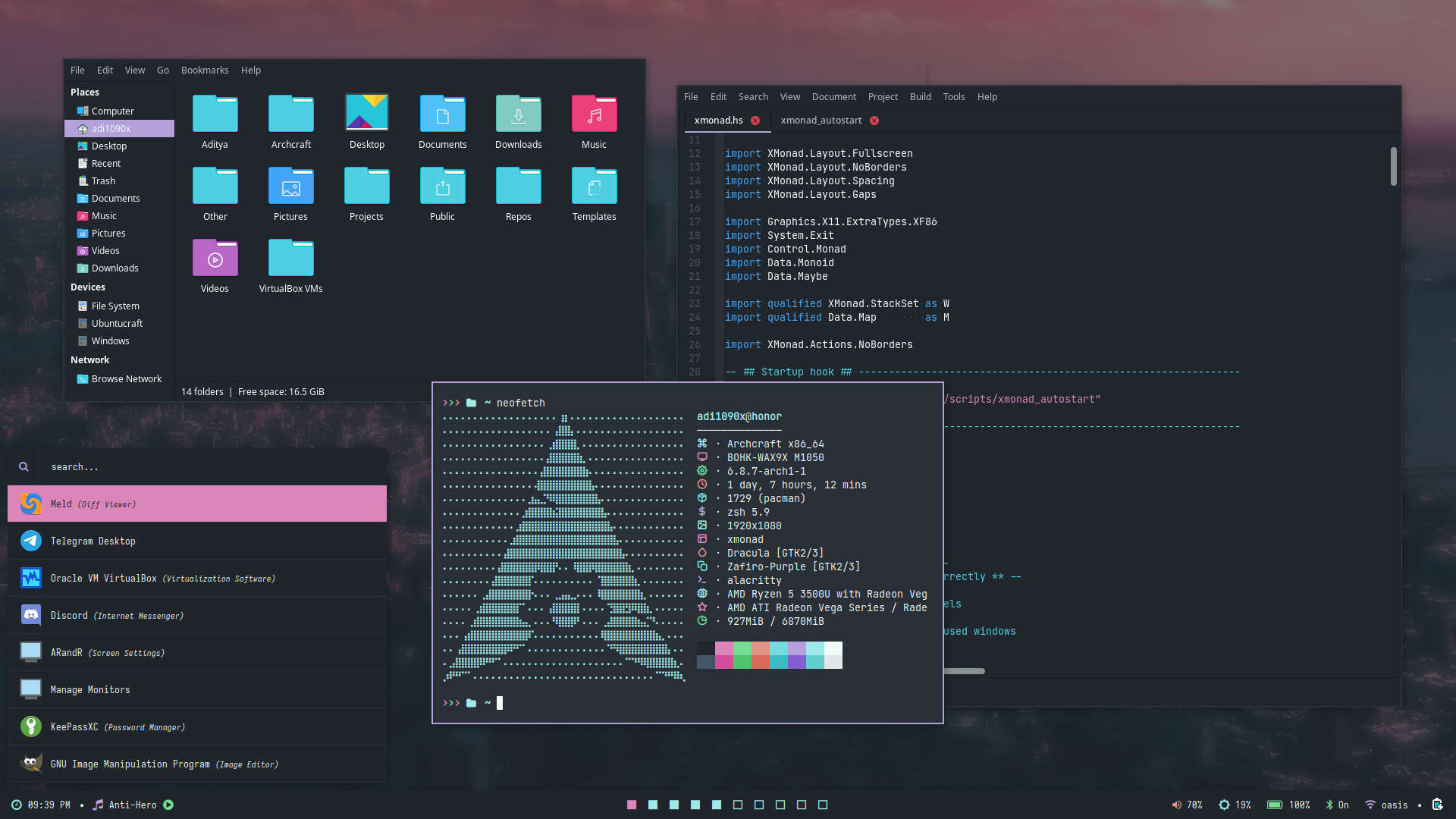 | 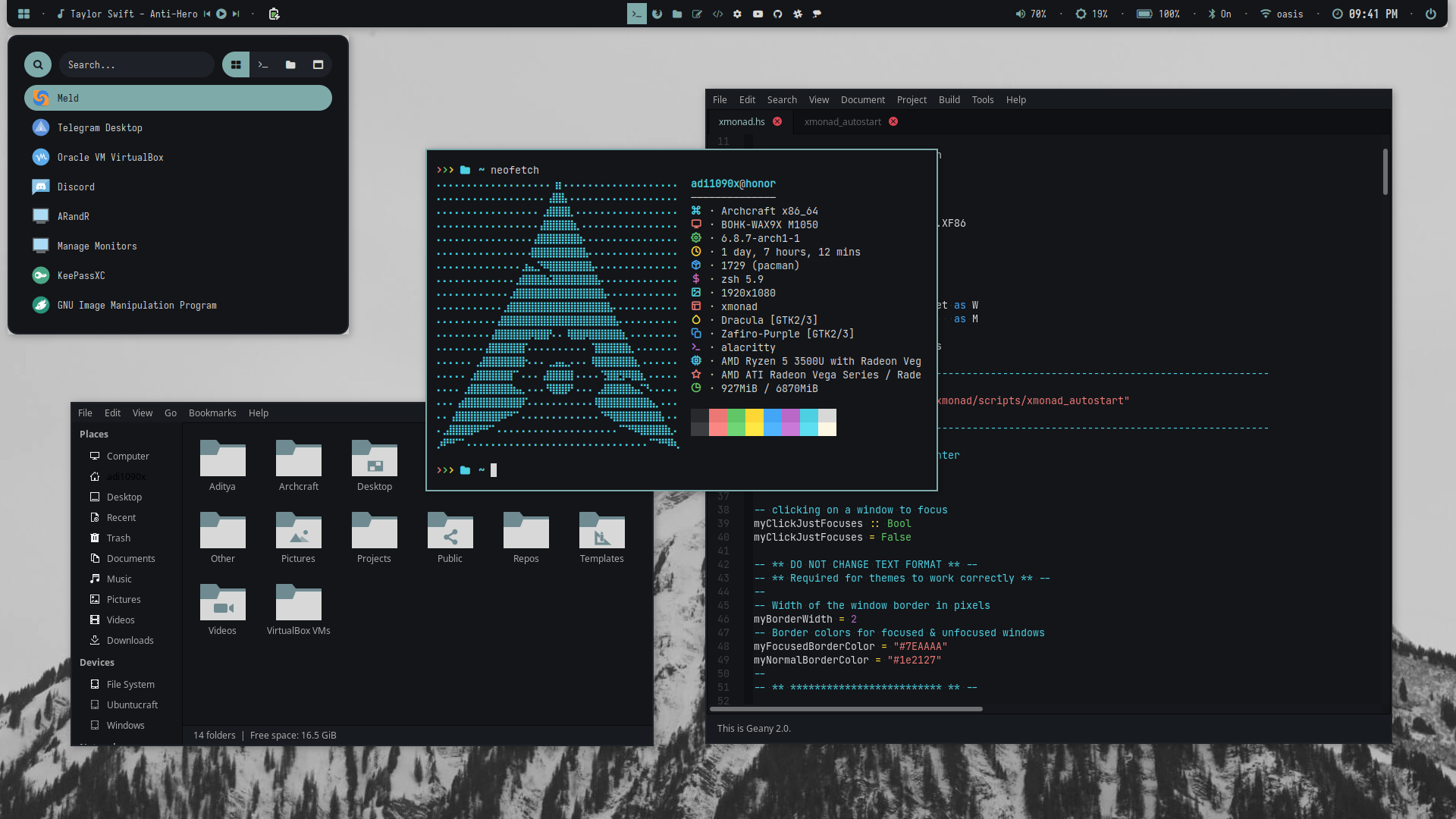 |
| Theme 21 | Theme 22 | Theme 23 | Theme 24 | Theme 25 |
|---|---|---|---|---|
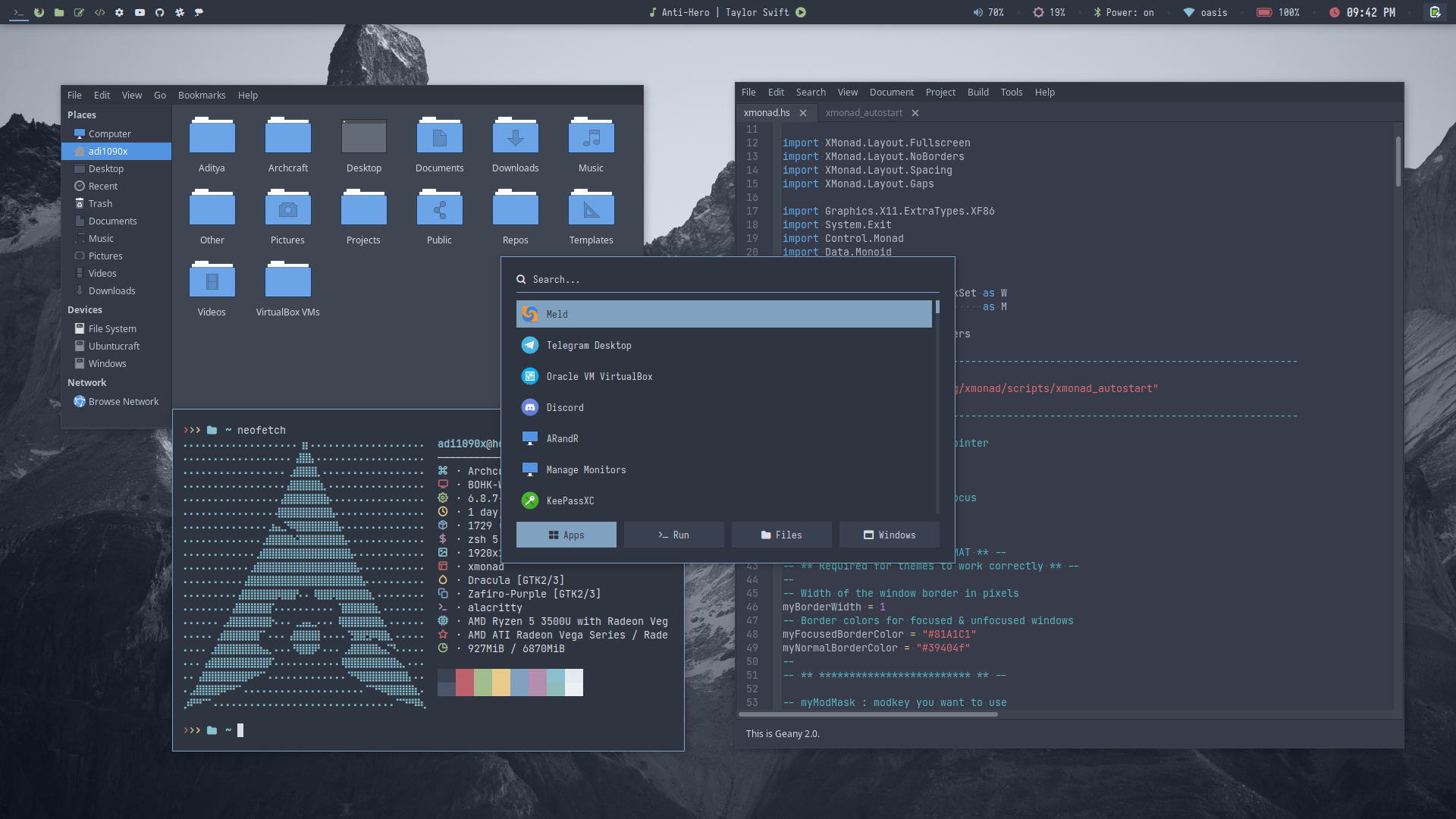 | 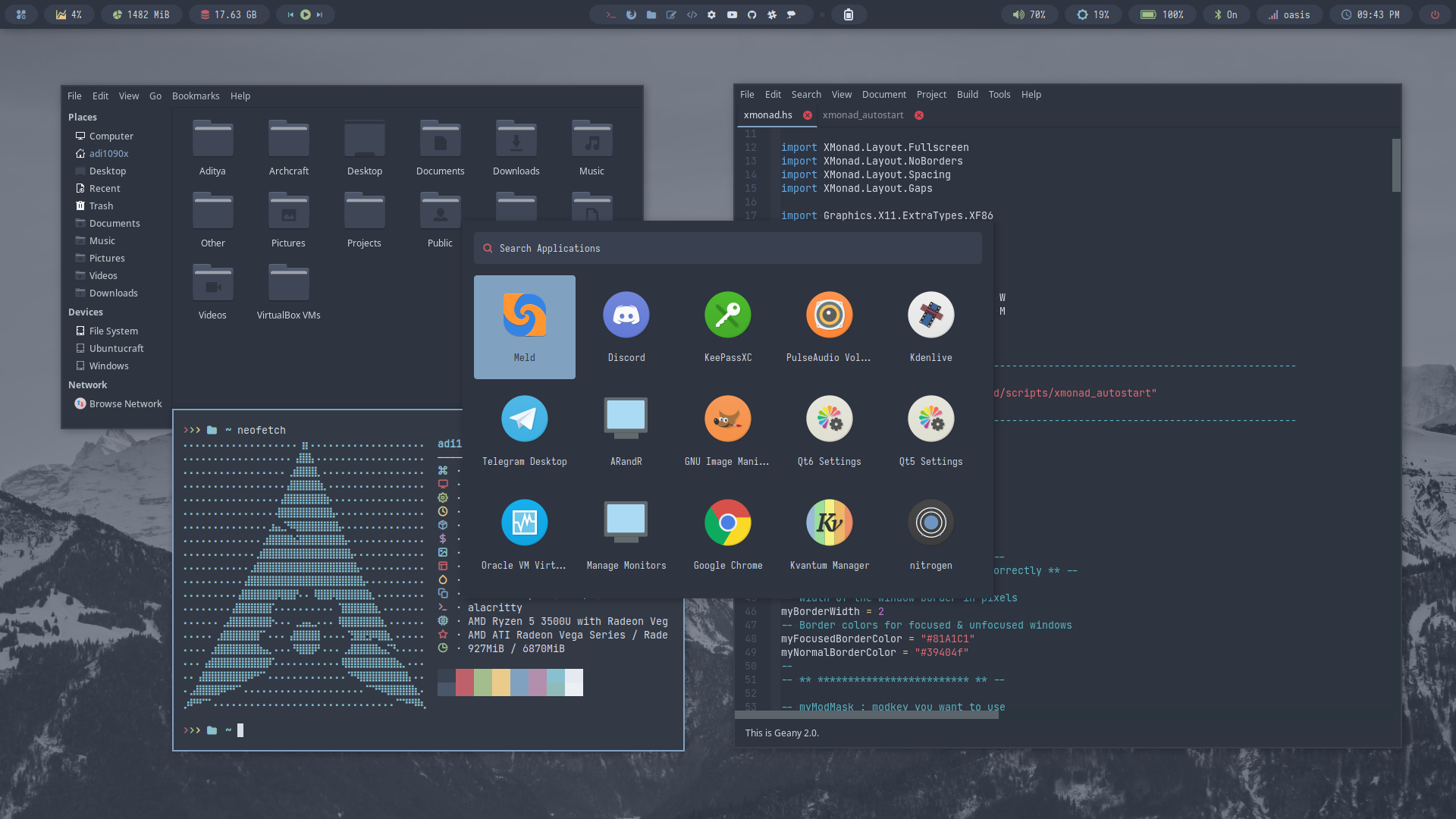 | 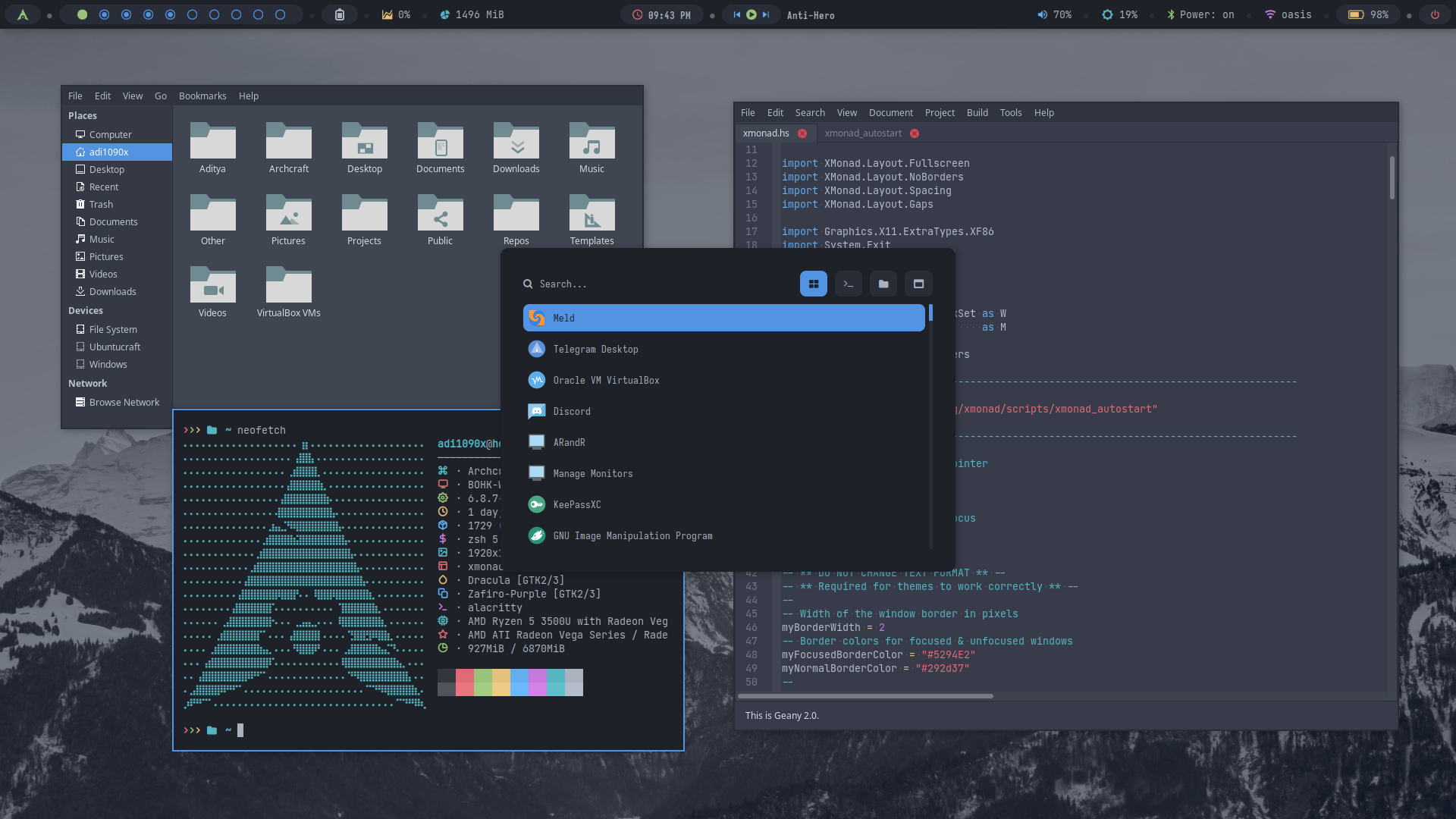 | 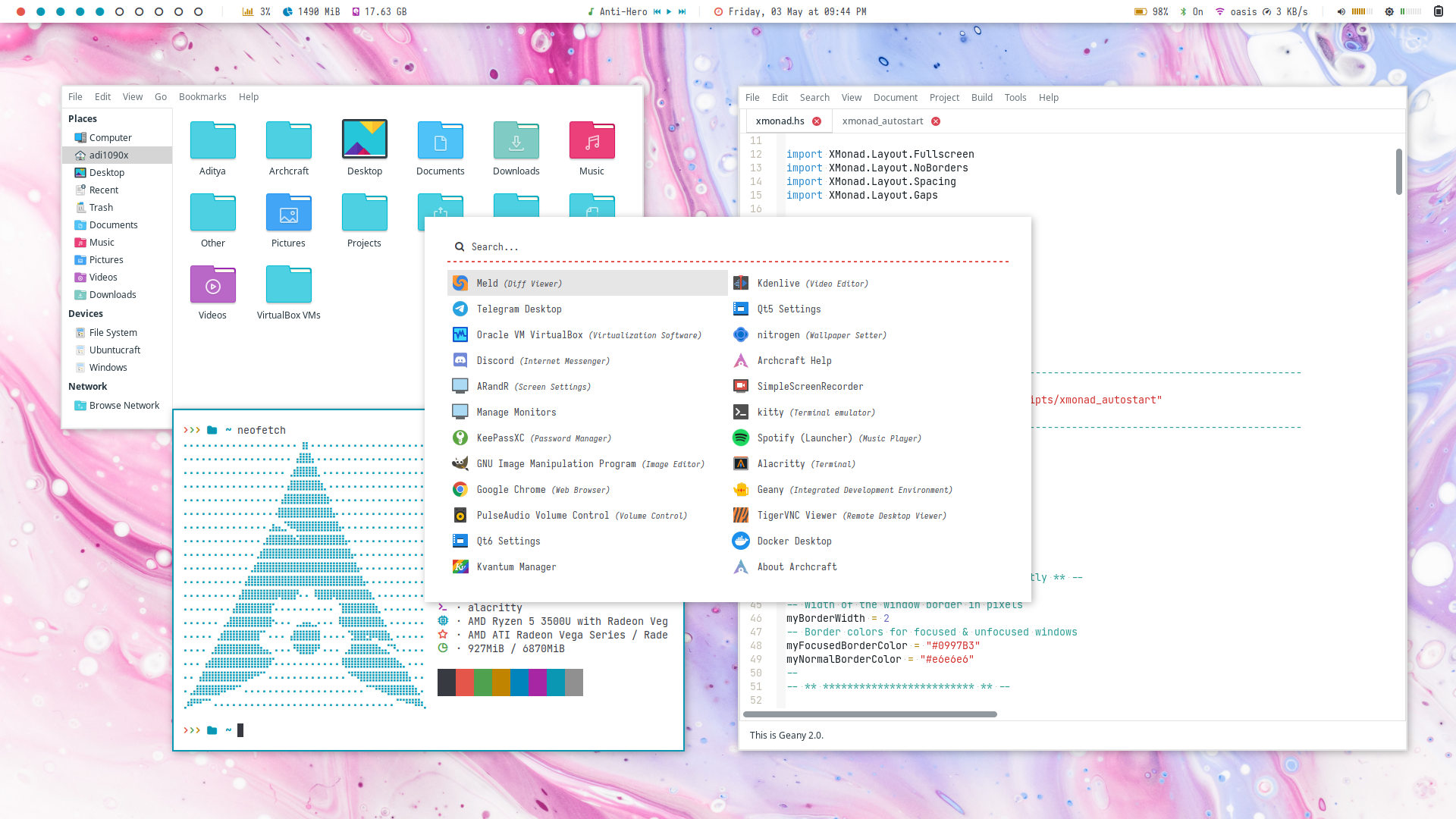 | 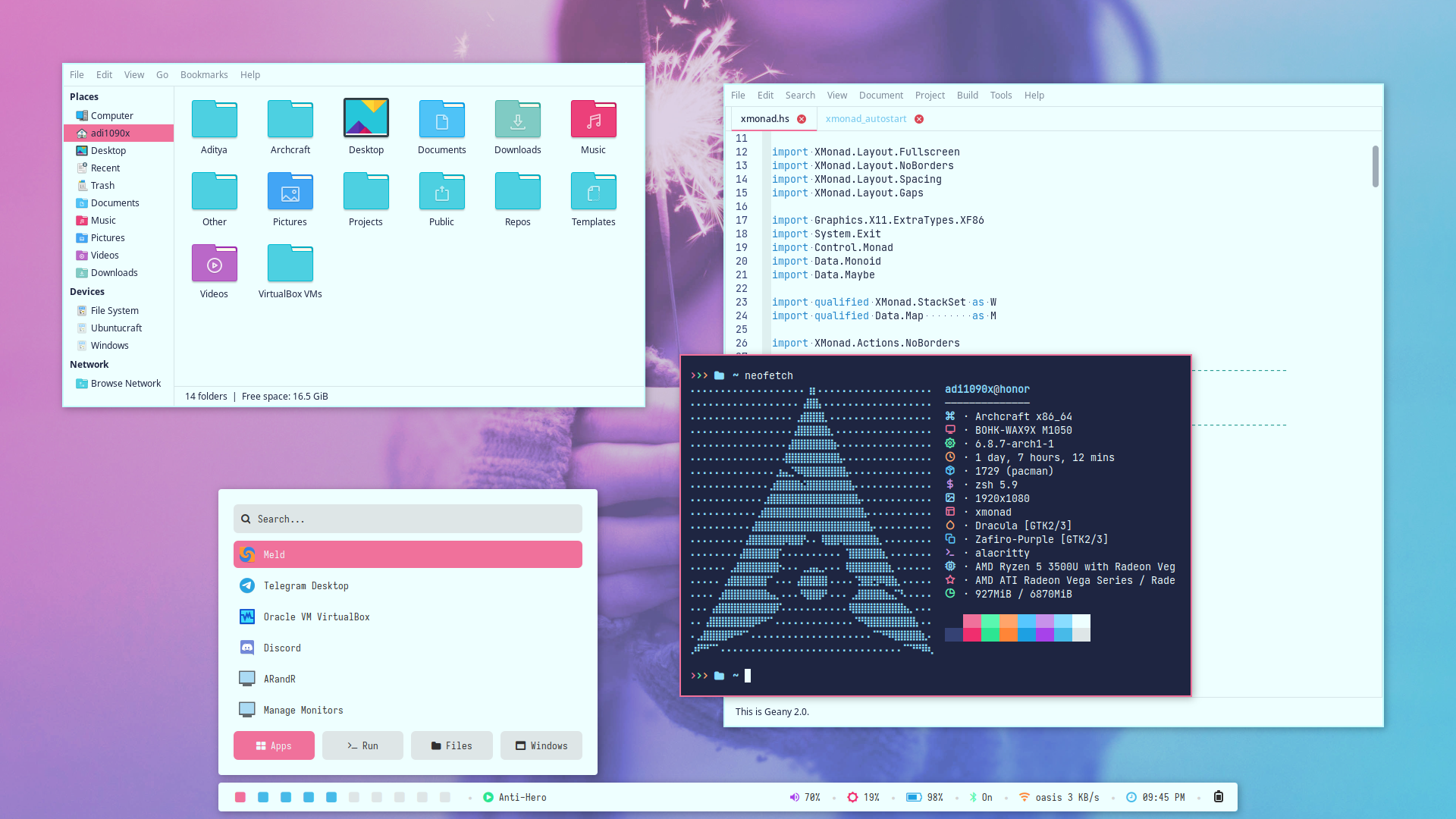 |
| Theme 26 | Theme 27 |
|---|---|
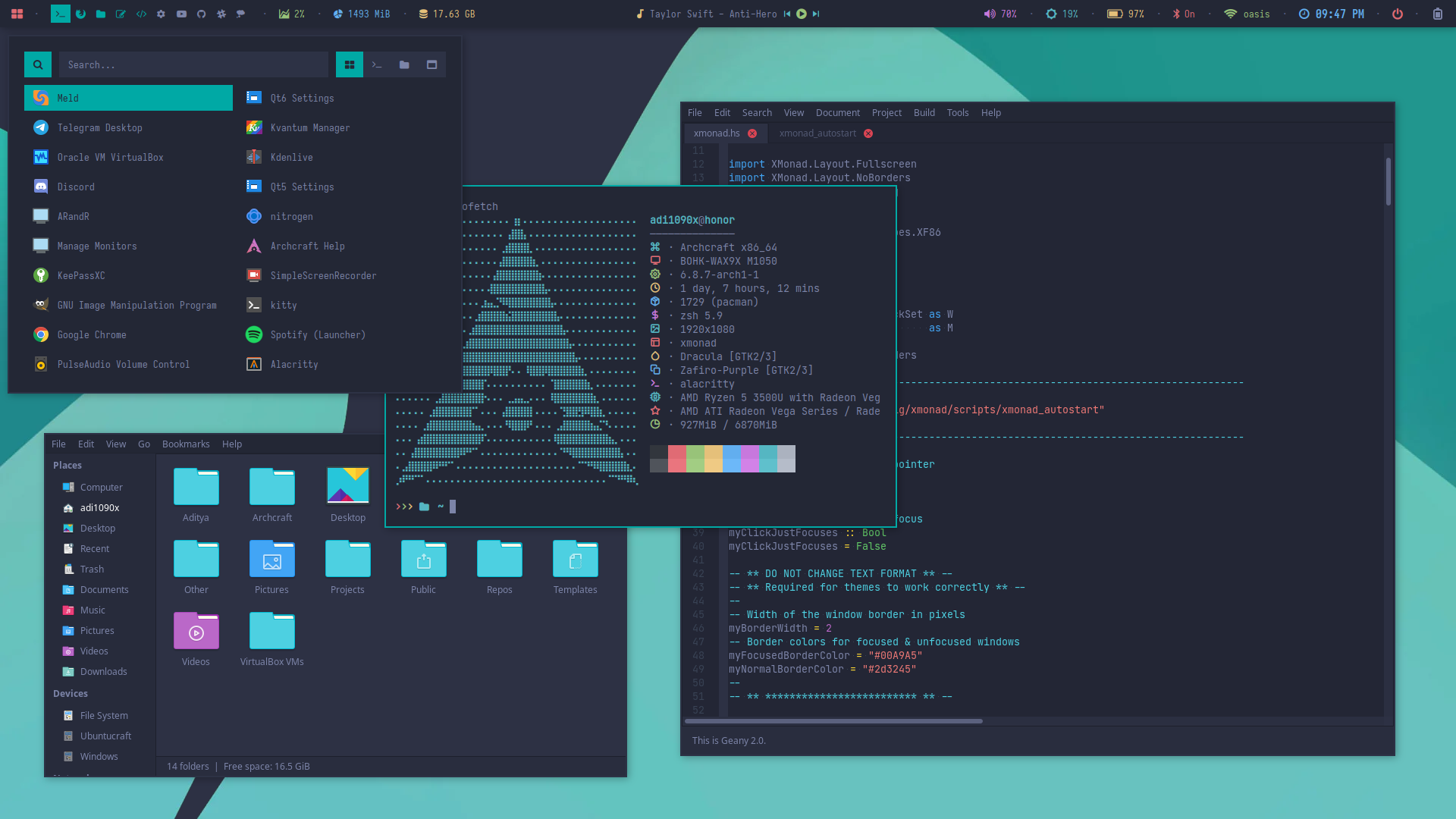 |  |
Auto Generated themes with pywal. This feature is only available in Xmonad premium.
Press SUPER + T and select Random to apply a random theme.

FAQs
How to update my config to new configs?
When a new version of Archcraft Xmonad get released, And you update the system by sudo pacman -Syu or you update the Xmonad package by sudo pacman -S archcraft-xmonad, New config files get installed as xmonad_pacnew_YYYY-MM-DD in your ~/.config directory.
To use new configs, backup your old ~/.config/xmonad directory and move ~/.config/xmonad_pacnew_YYYY-MM-DD to ~/.config/xmonad and login again.
For
Xmonad Premium, download the updated package from ko-fi (for free) and just install it to update to new configs.
How to change GTK theme, icons and cursor?
To change GTK theme, icons and cursor in Xmonad session, Edit ~/.config/xmonad/xsettingsd file and restart Xmonad to apply the changes.
Net/ThemeName "Rick"
Net/IconThemeName "Zafiro-Red"
Gtk/CursorThemeName "Qogirr-Dark"
How to manage multiple monitors and resolution in Xmonad?
If you use multiple monitors with Xmonad window manager, you can manage them by running Manager Monitors or archcraft-randr app.
Why Alacritty is not working on my computer?
Since Alacritty is a OpenGL based terminal emulator, It may not work on some computer hardwares. You can make it work on such computers by following these methods :
- Open alacritty with LIBGL_ALWAYS_SOFTWARE=1 variable. Edit the keybindings/script launching alacritty and replace
alacrittywithLIBGL_ALWAYS_SOFTWARE=1 alacritty - Edit /usr/share/applications/Alacritty.desktop desktop file and replace
Exec=alacrittywithExec=env LIBGL_ALWAYS_SOFTWARE=1 alacritty
